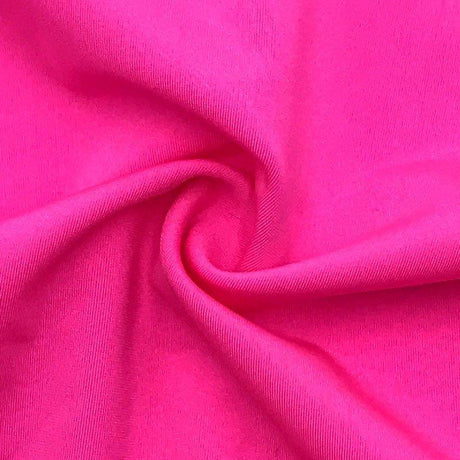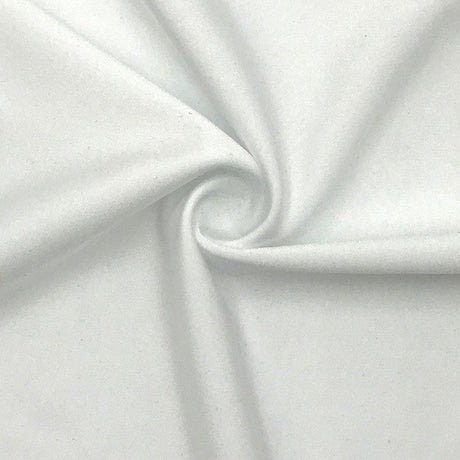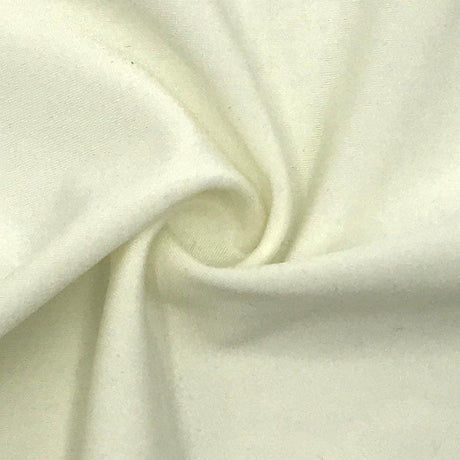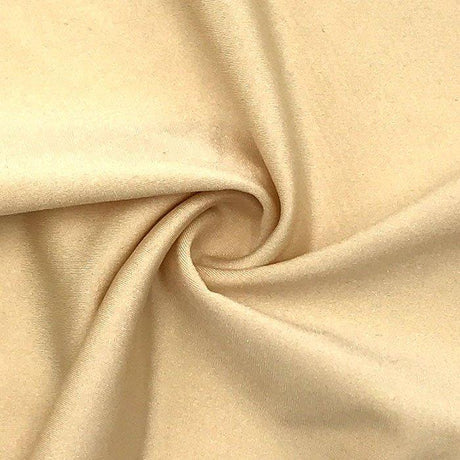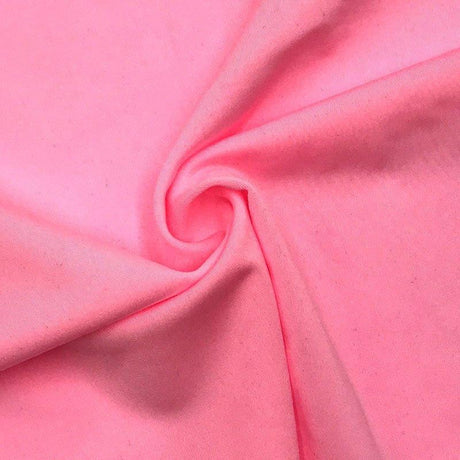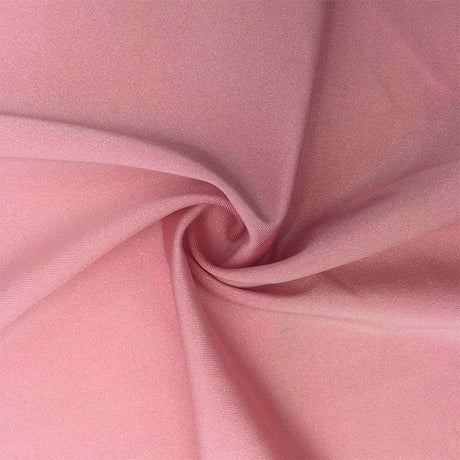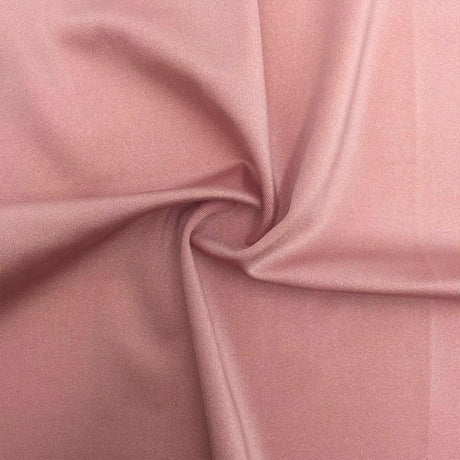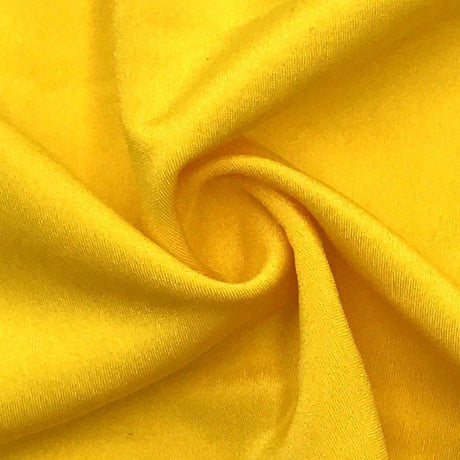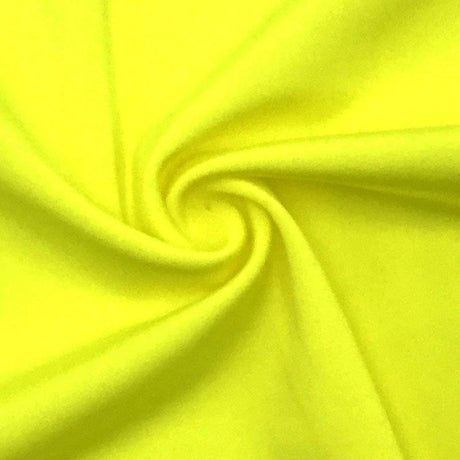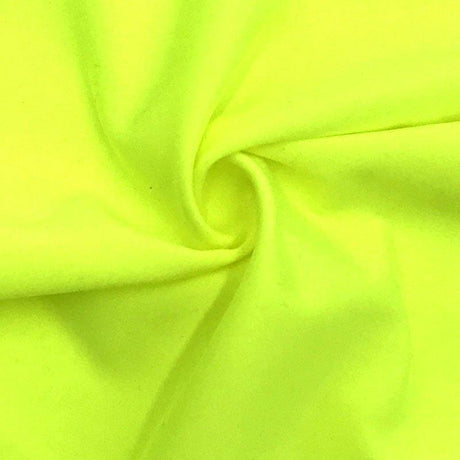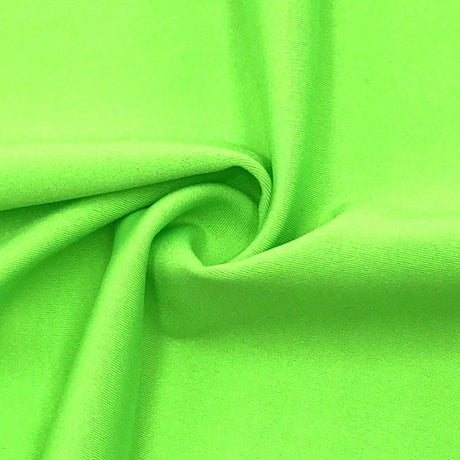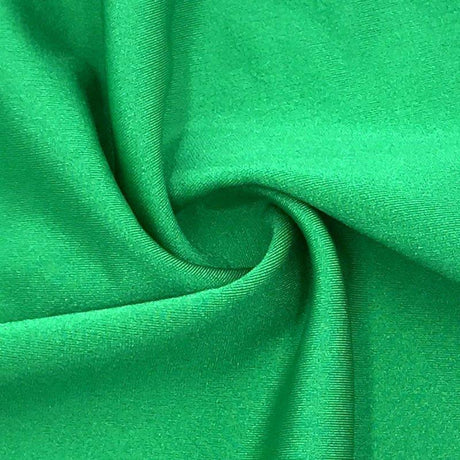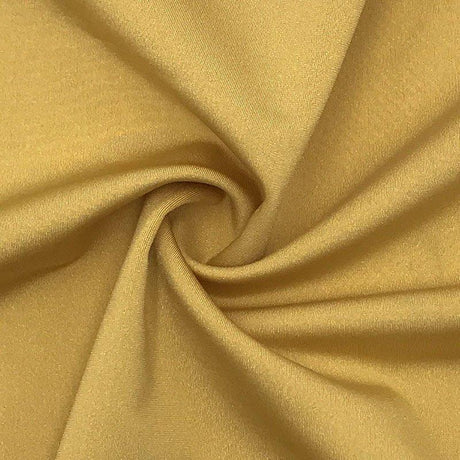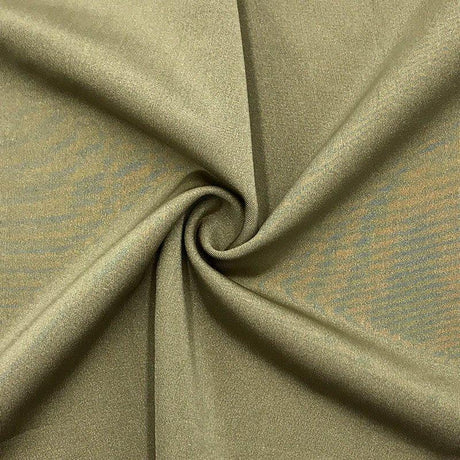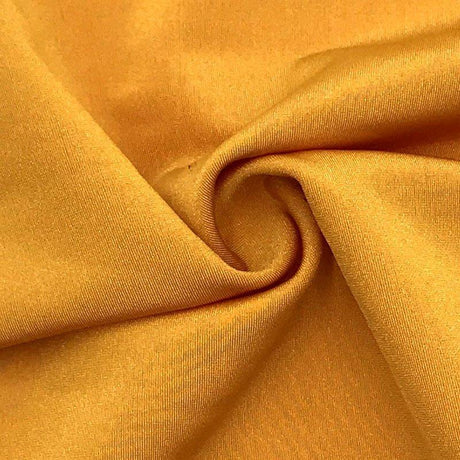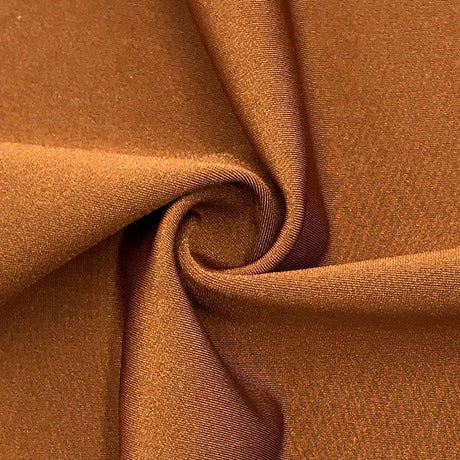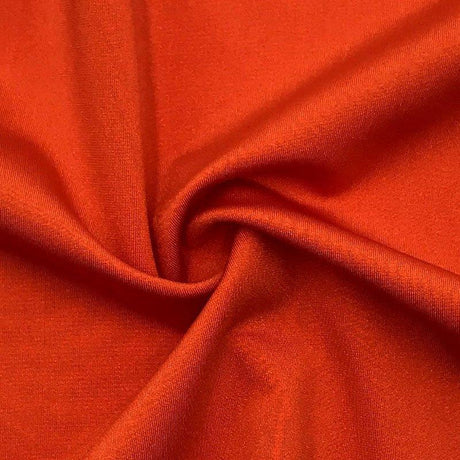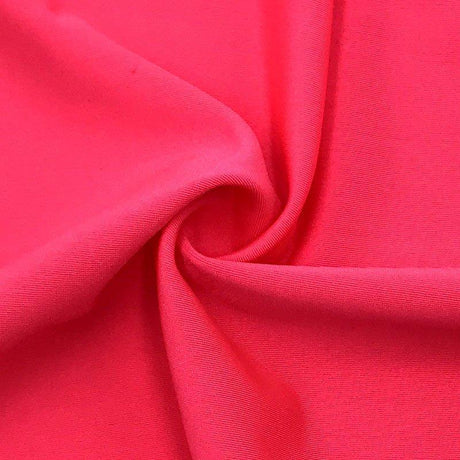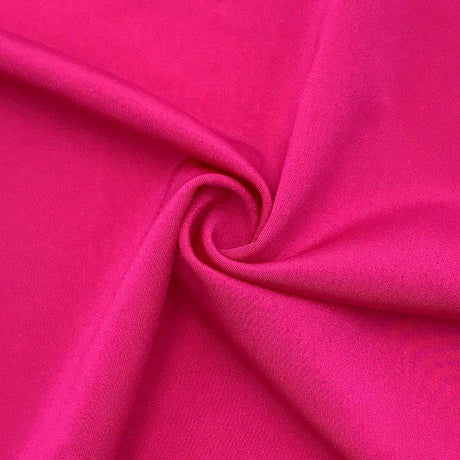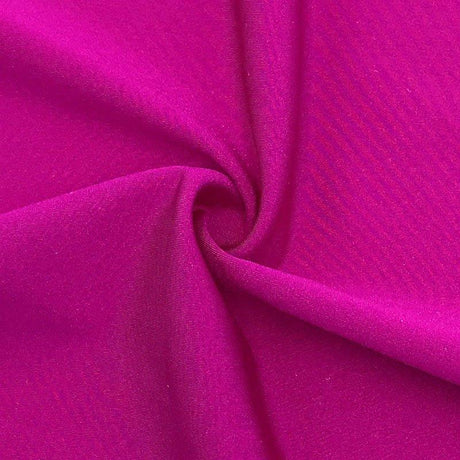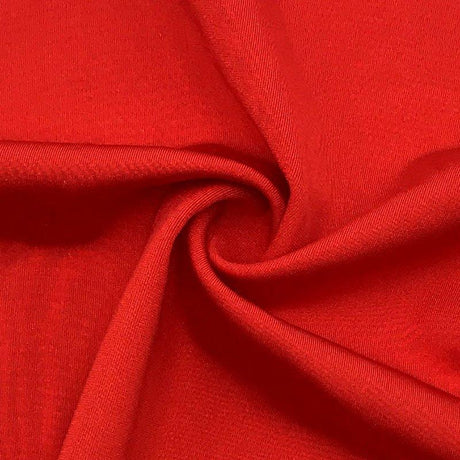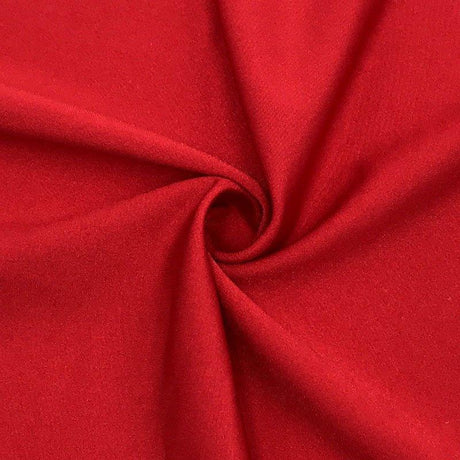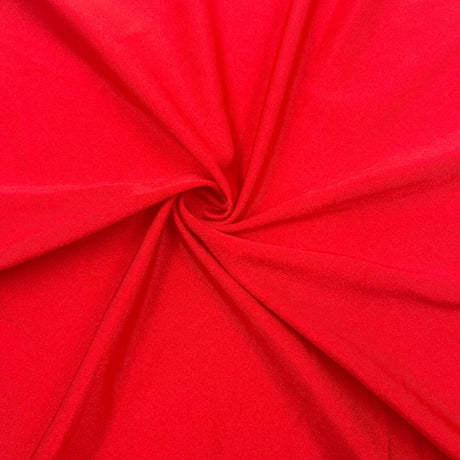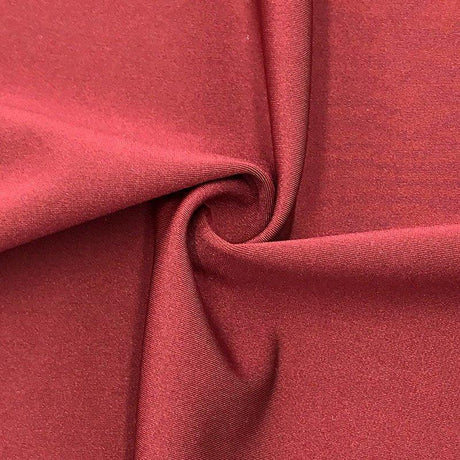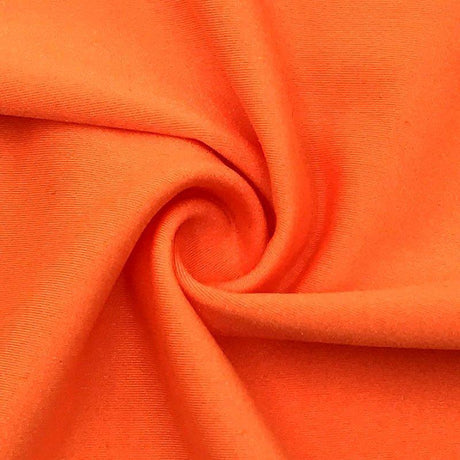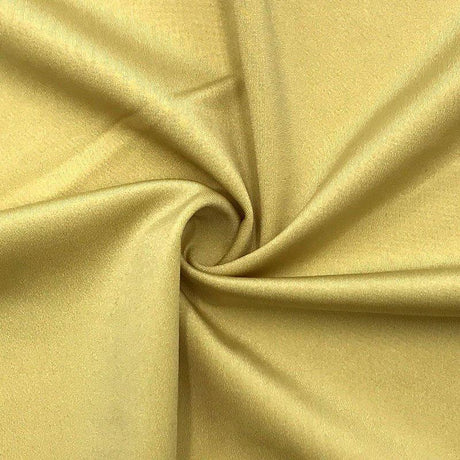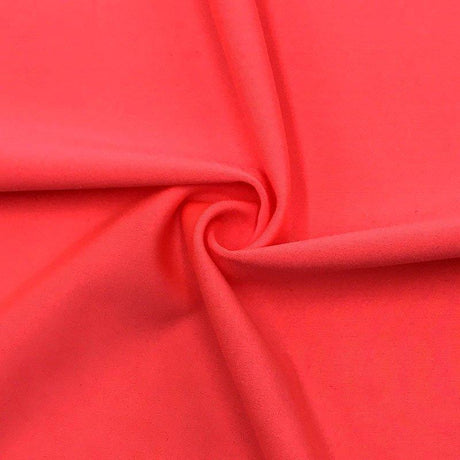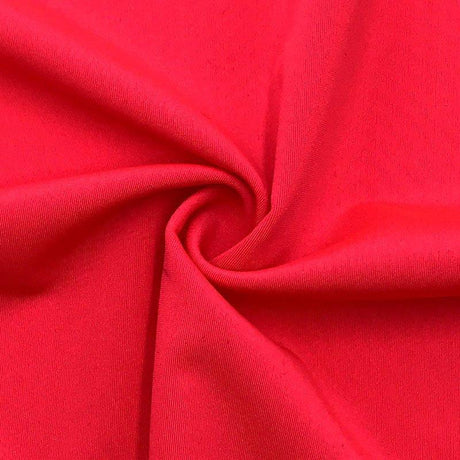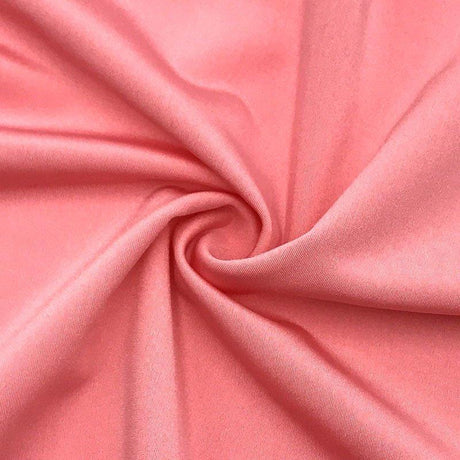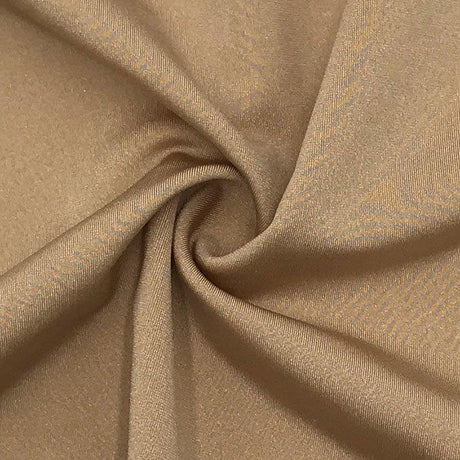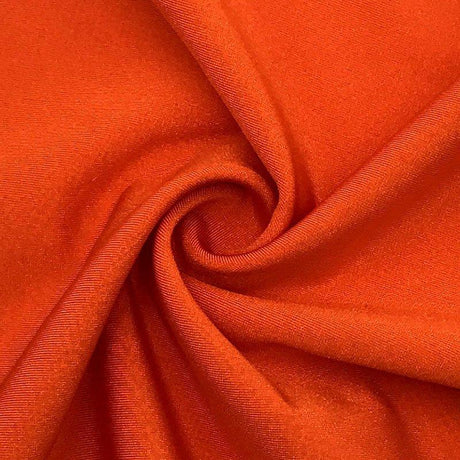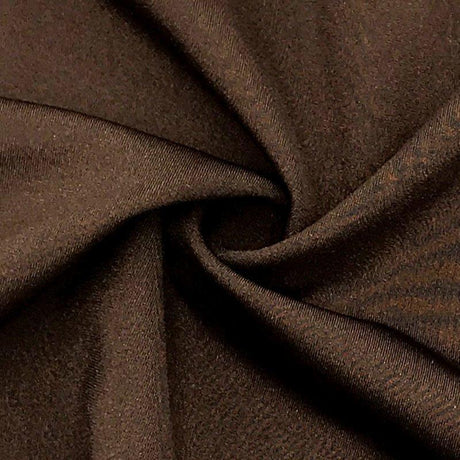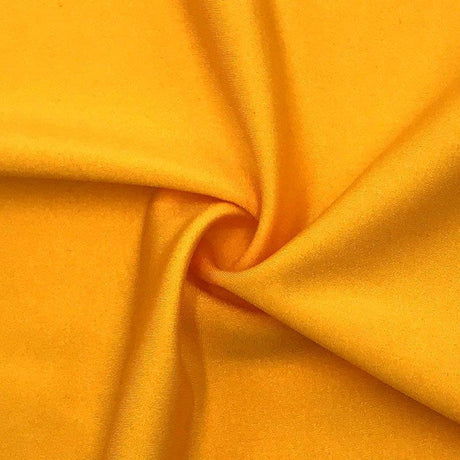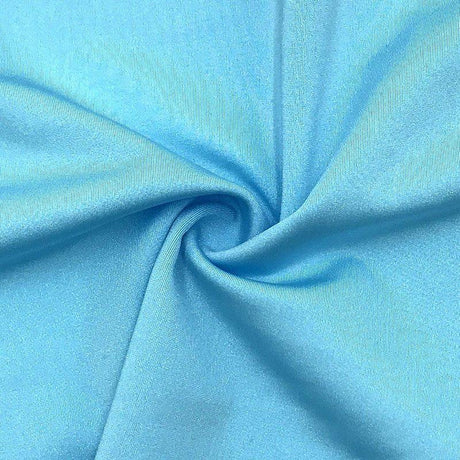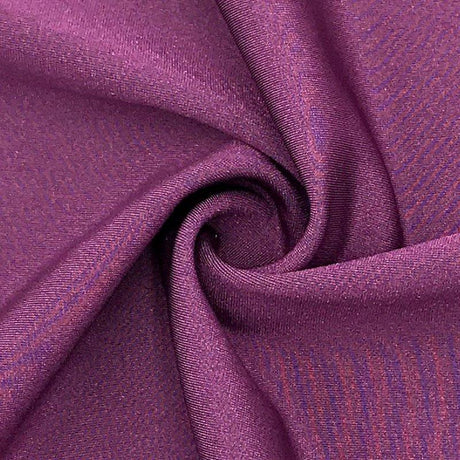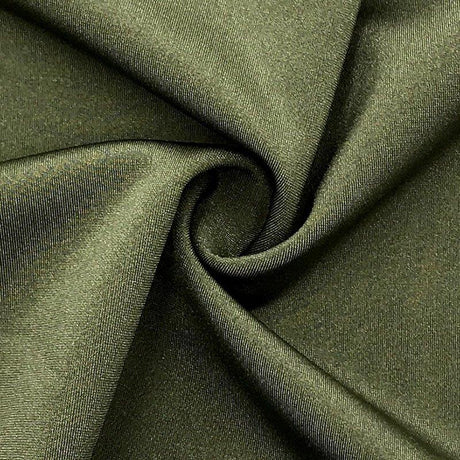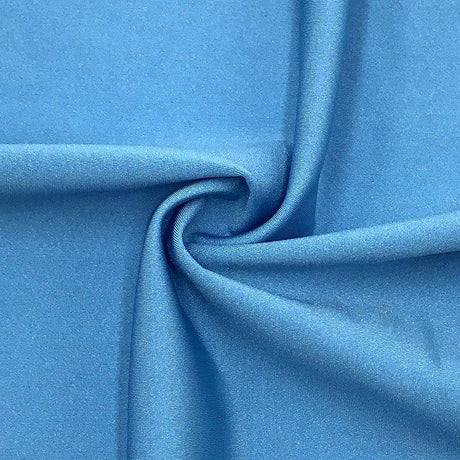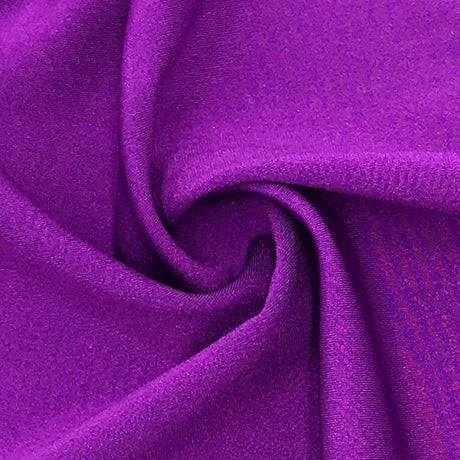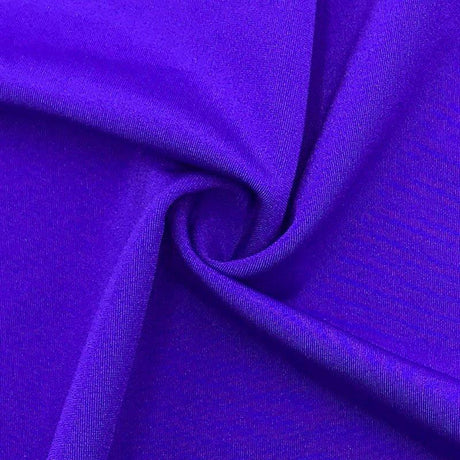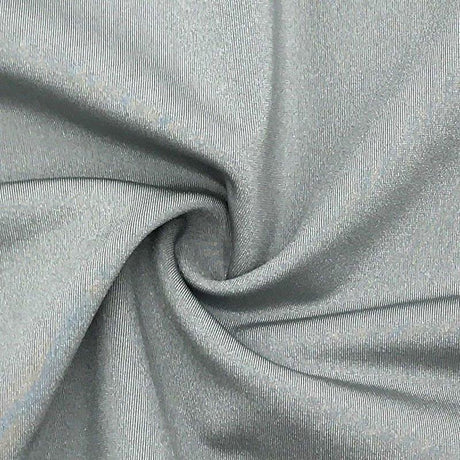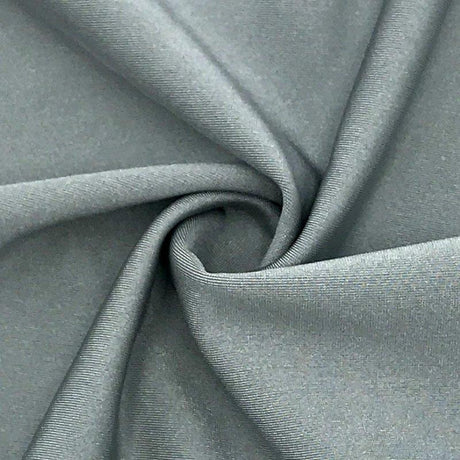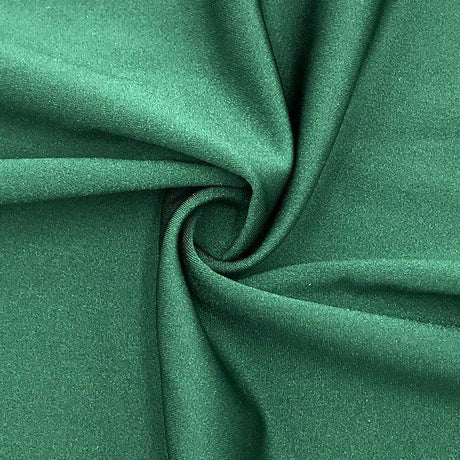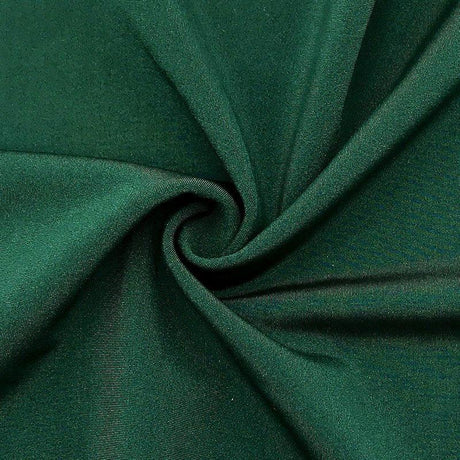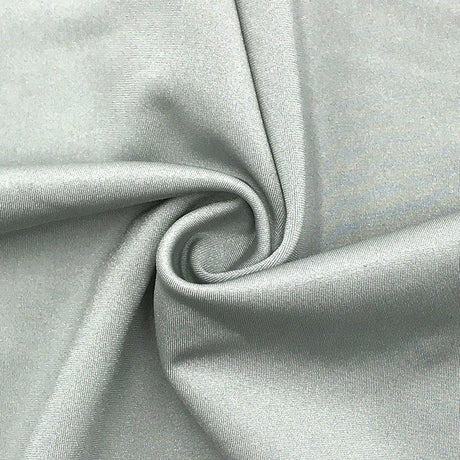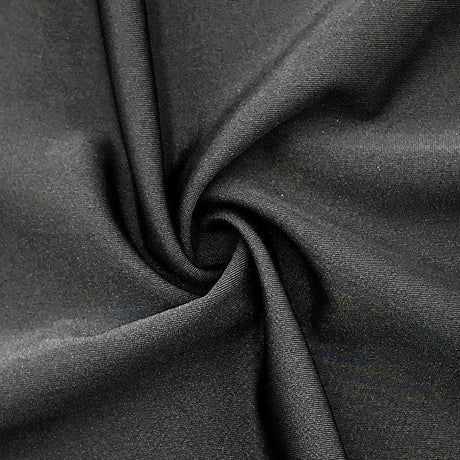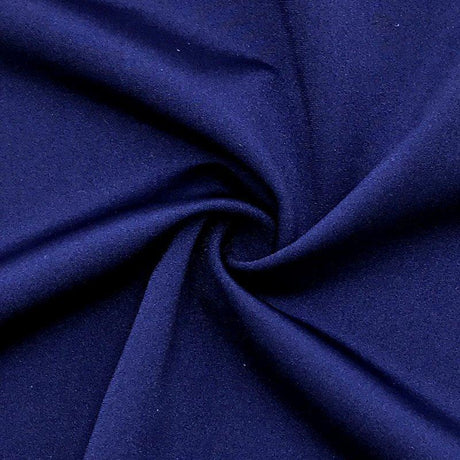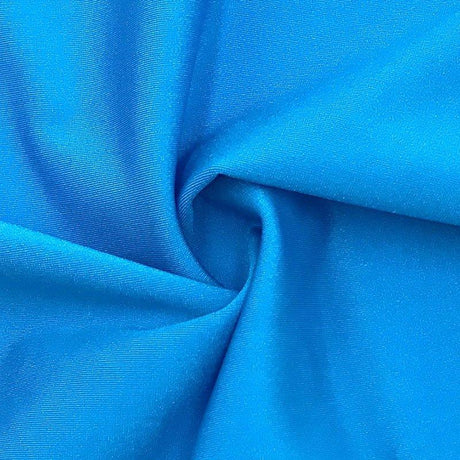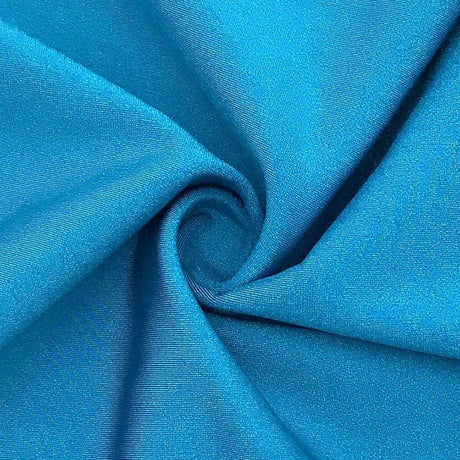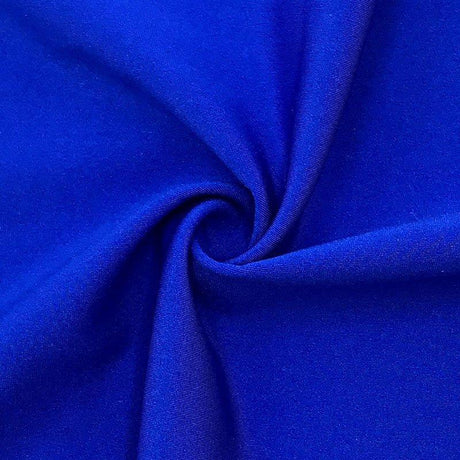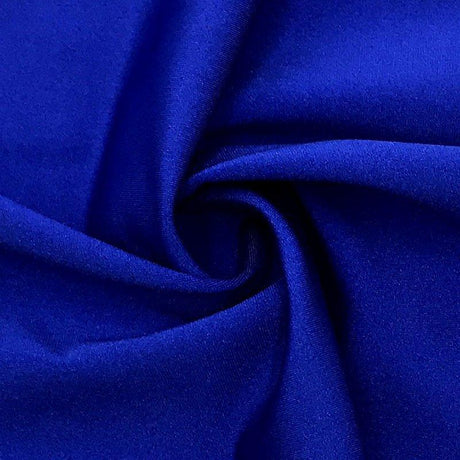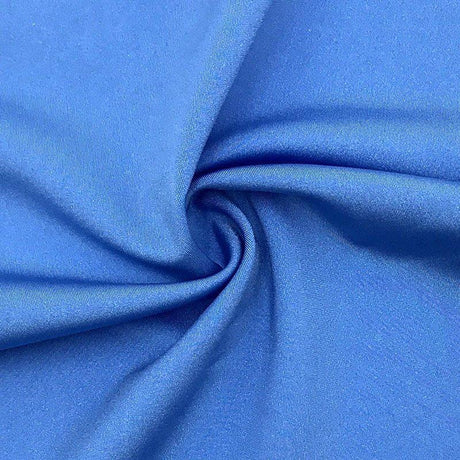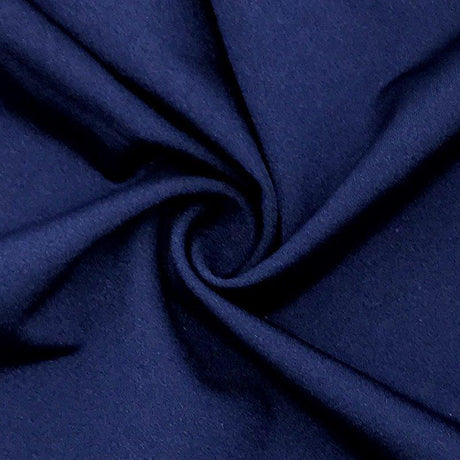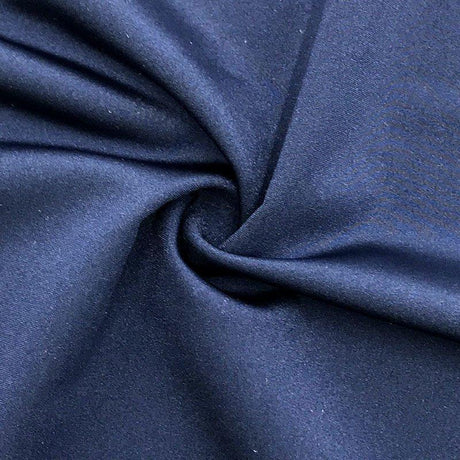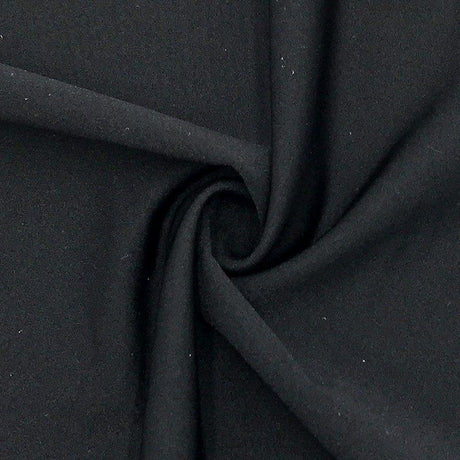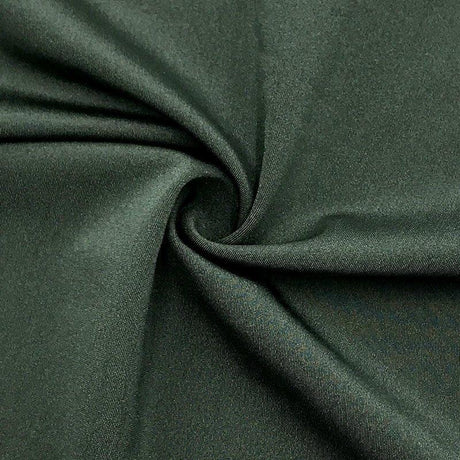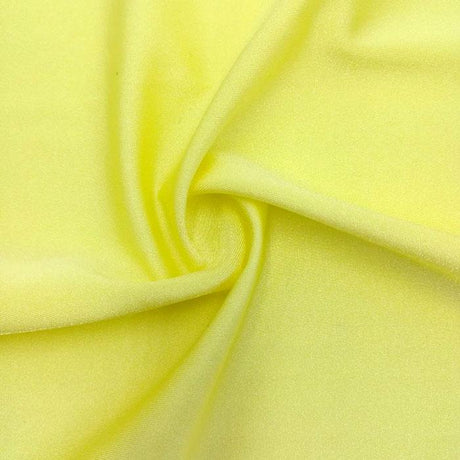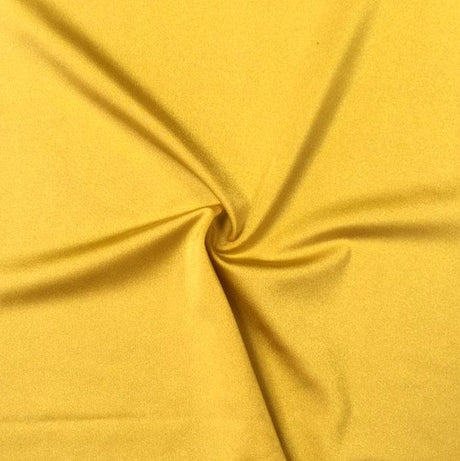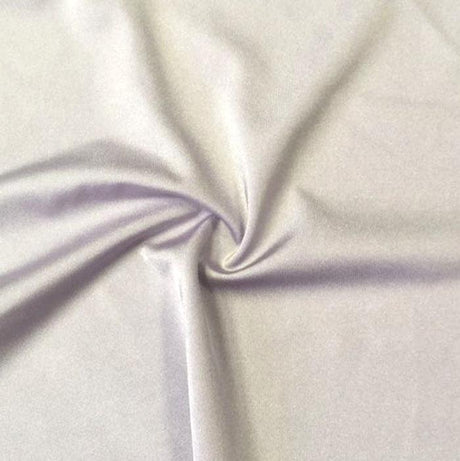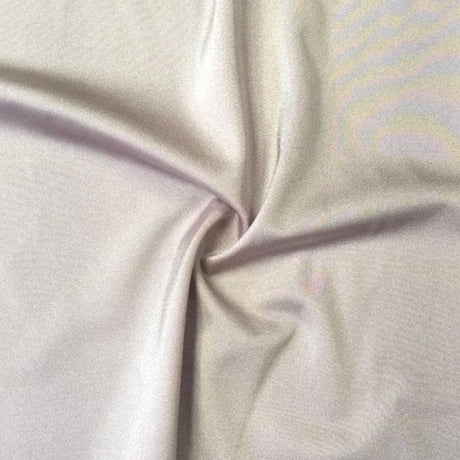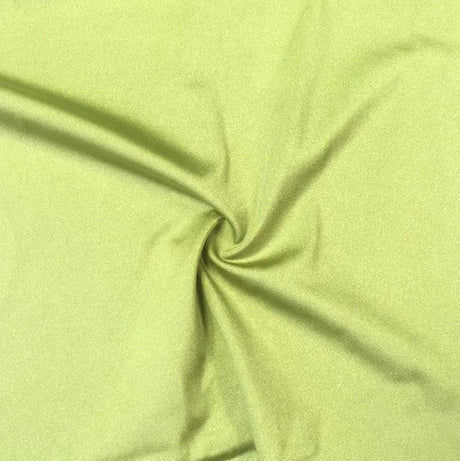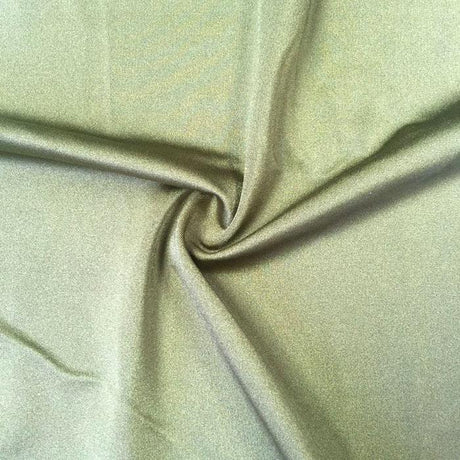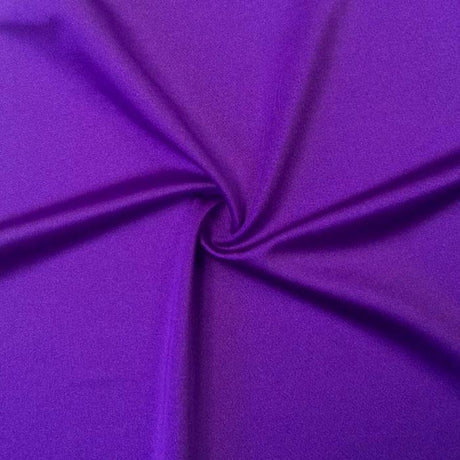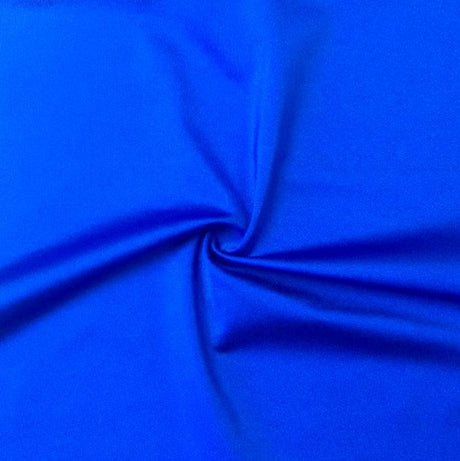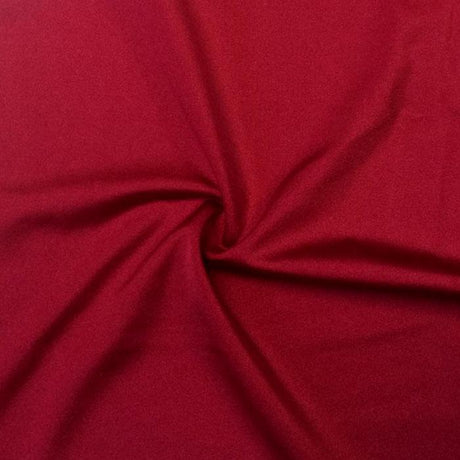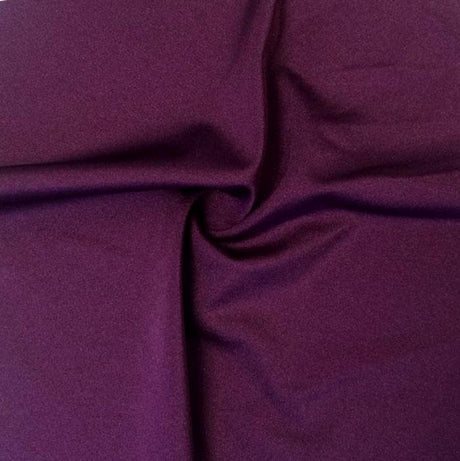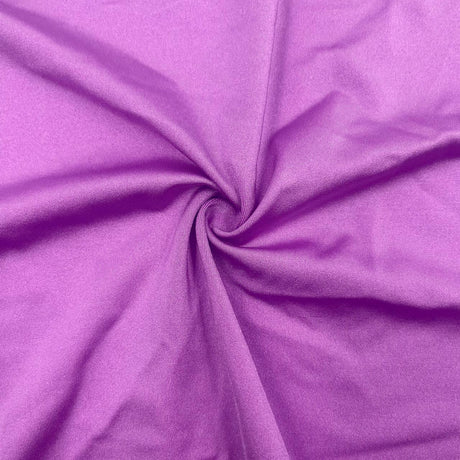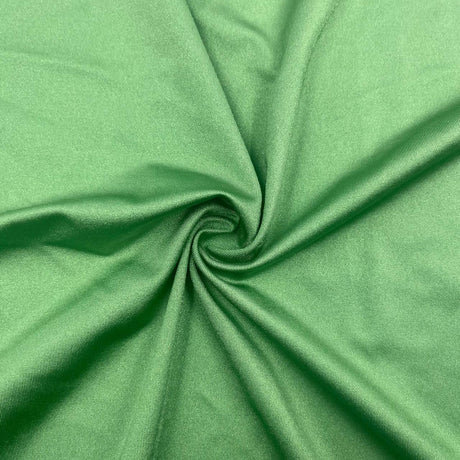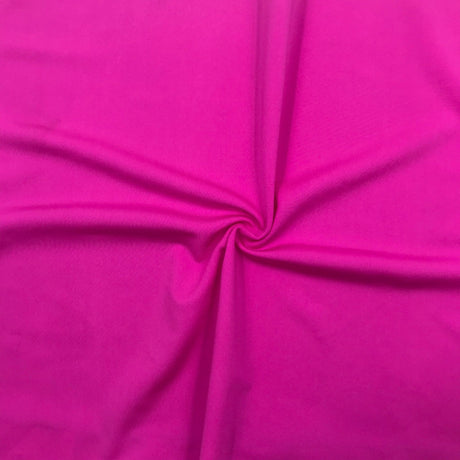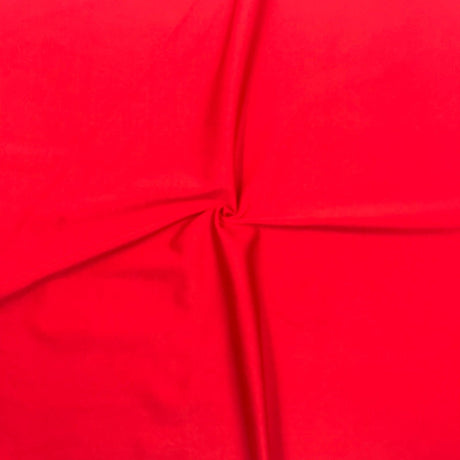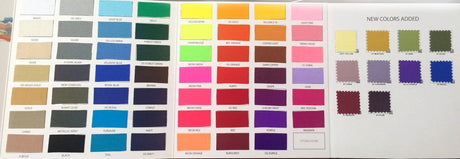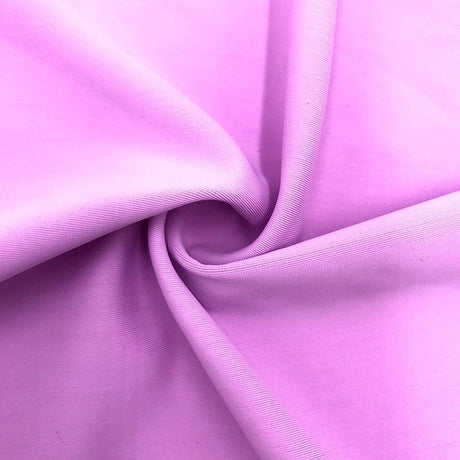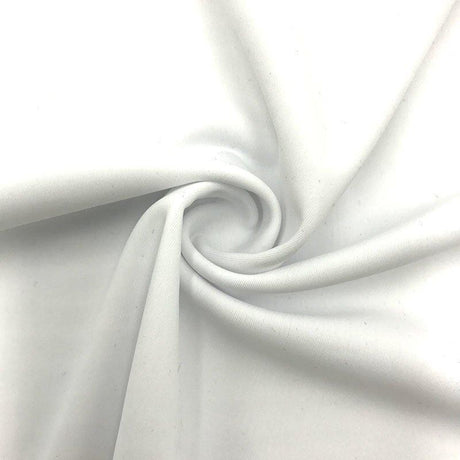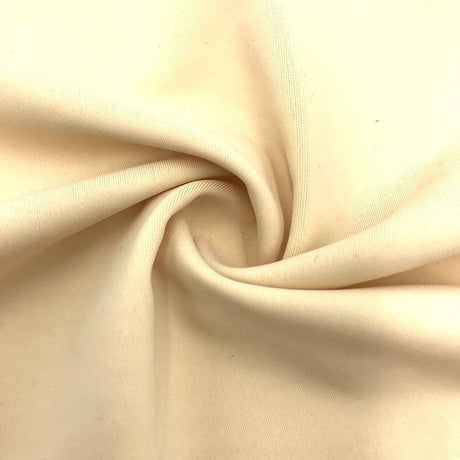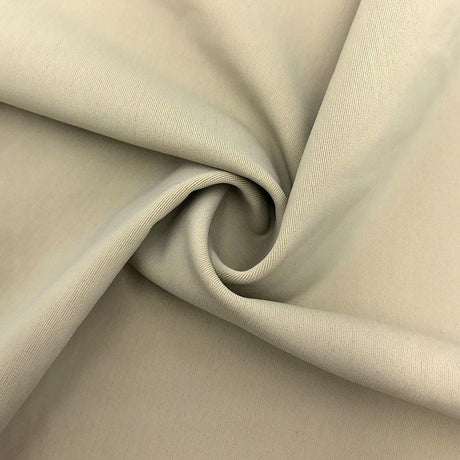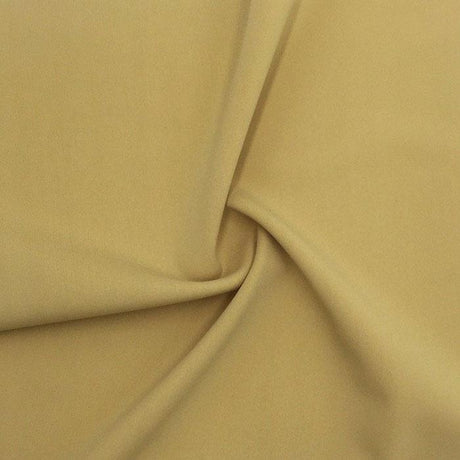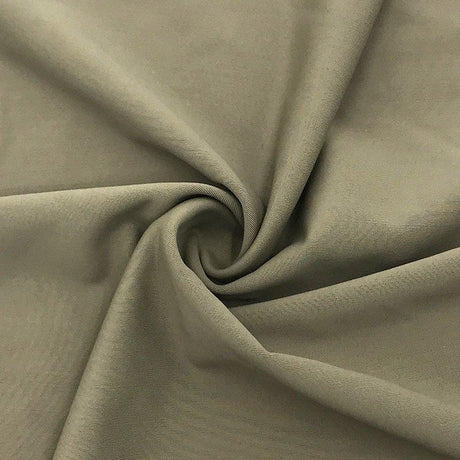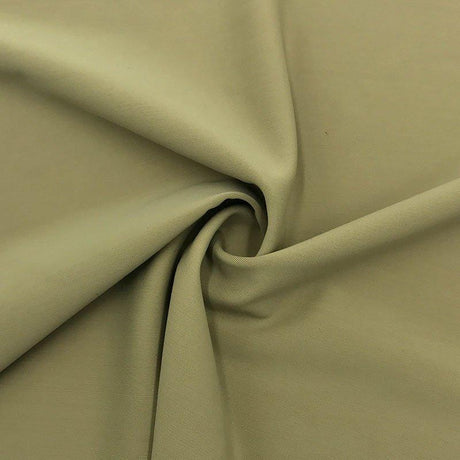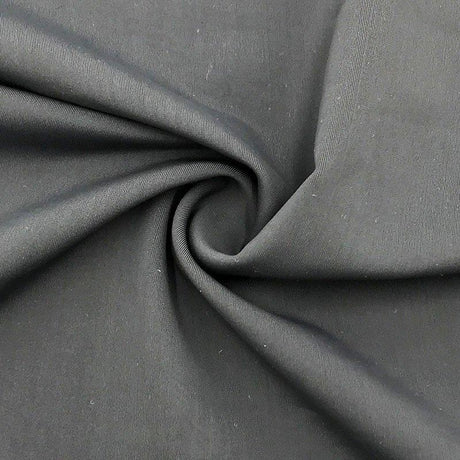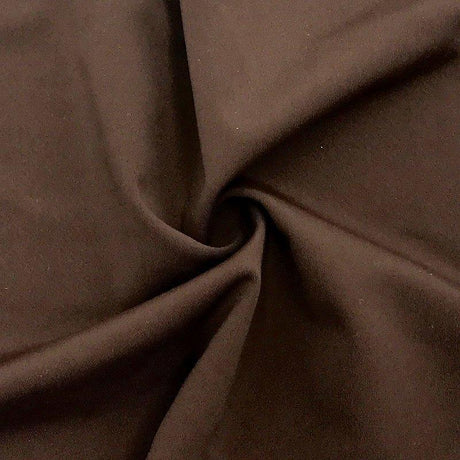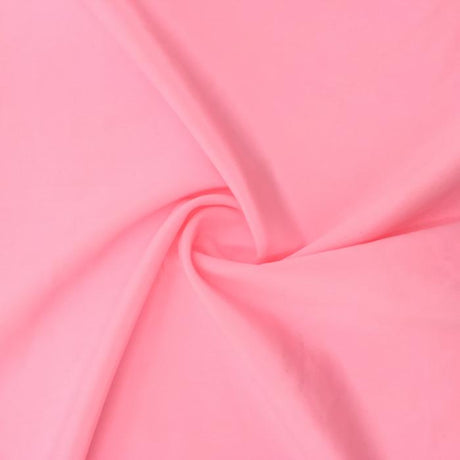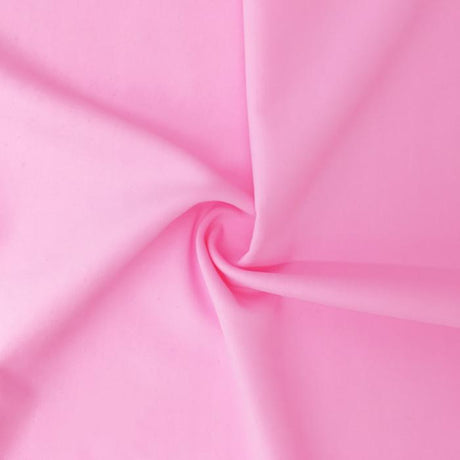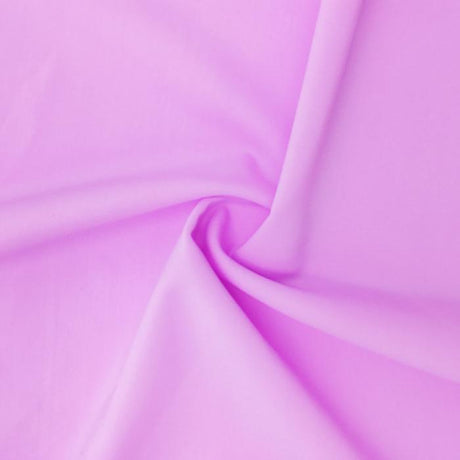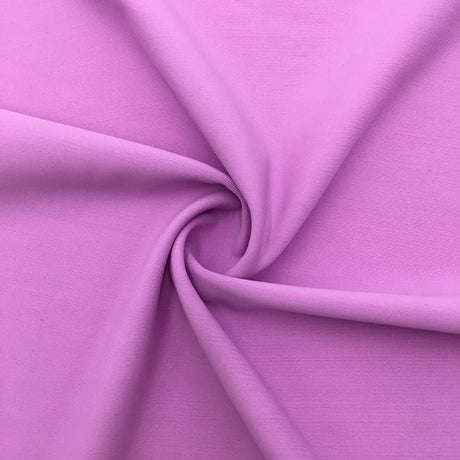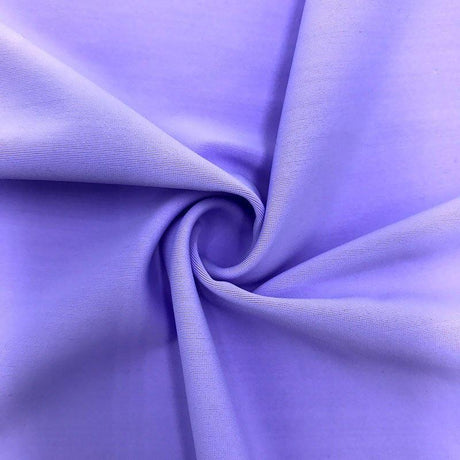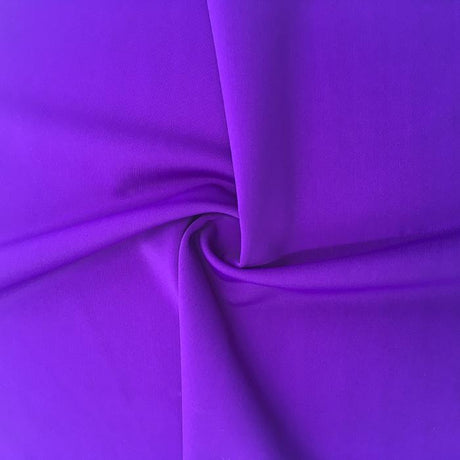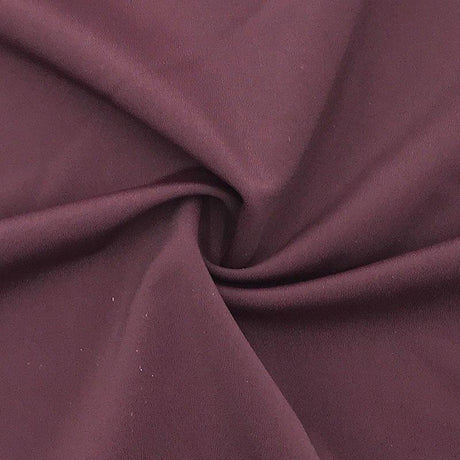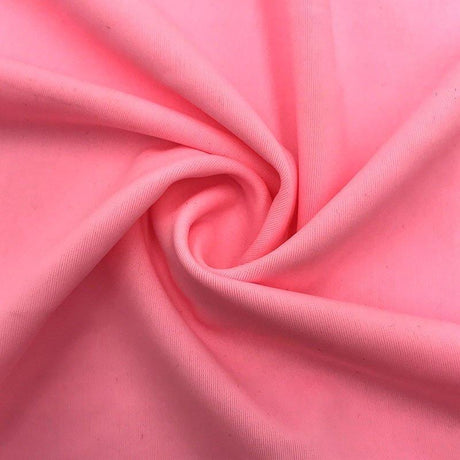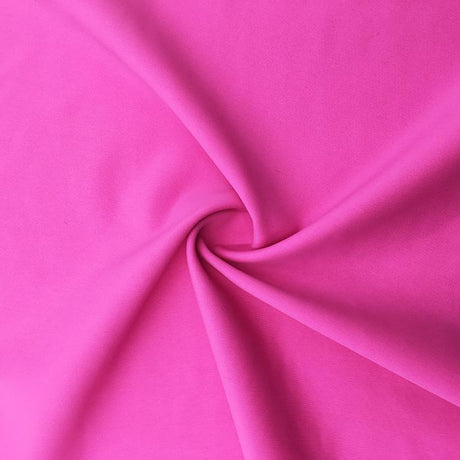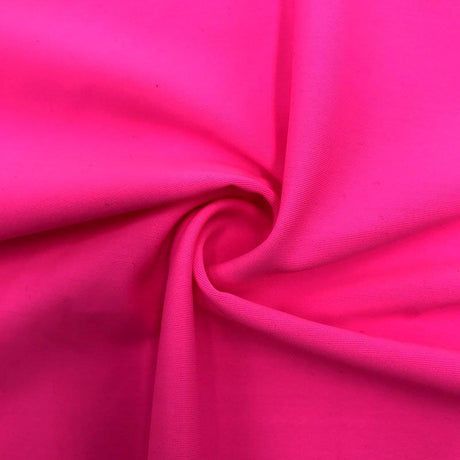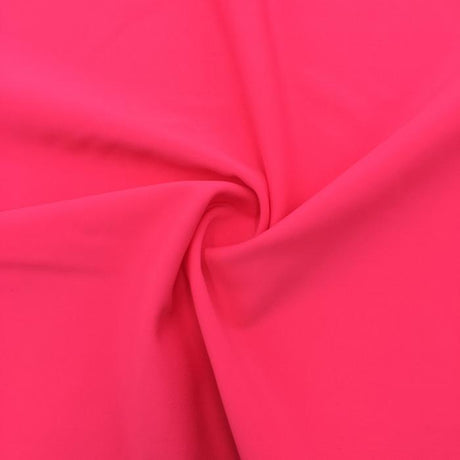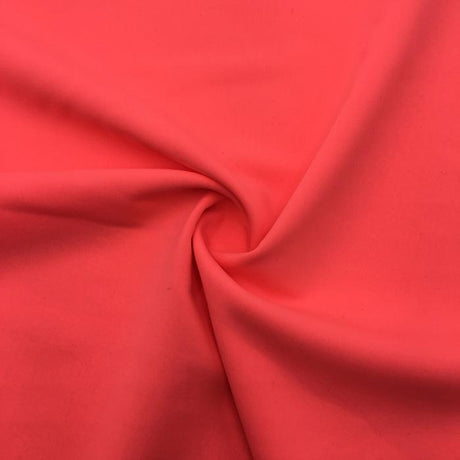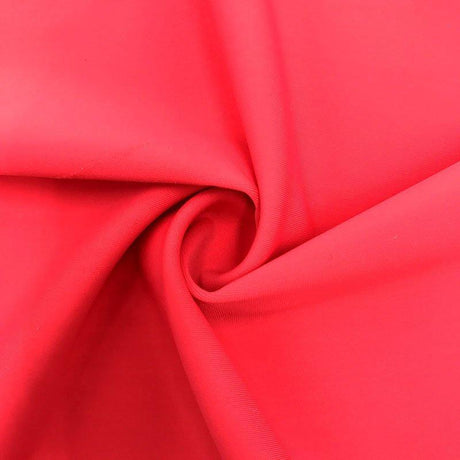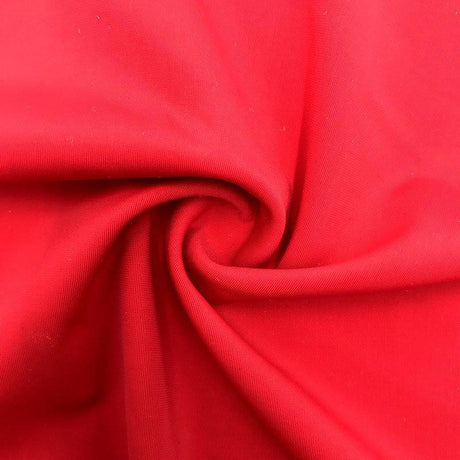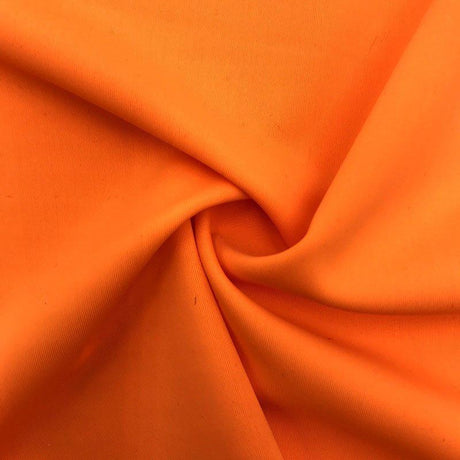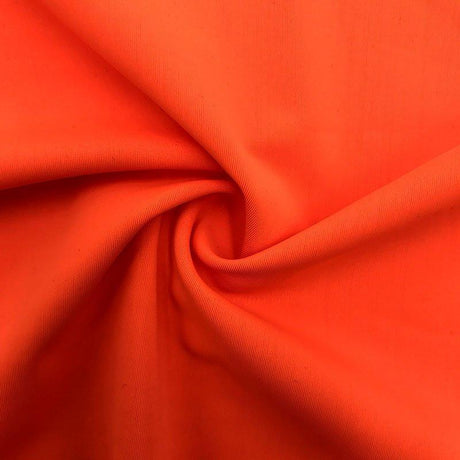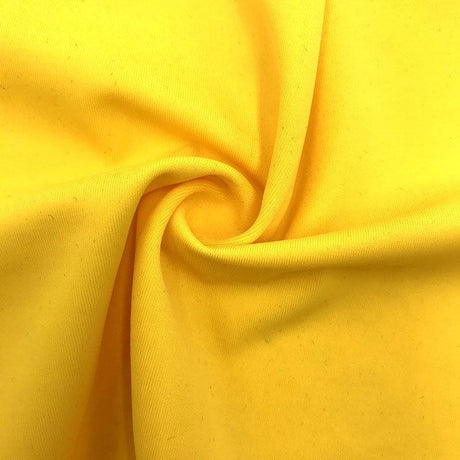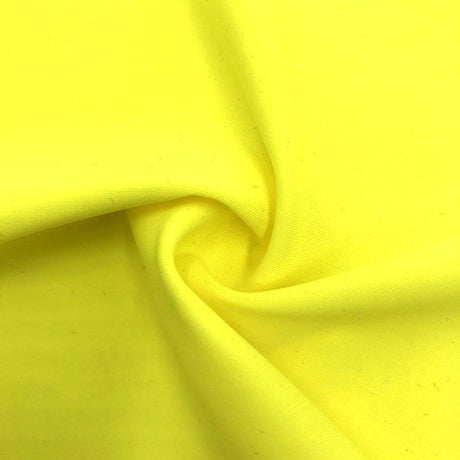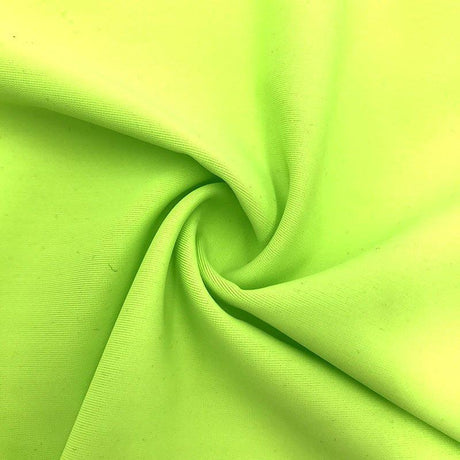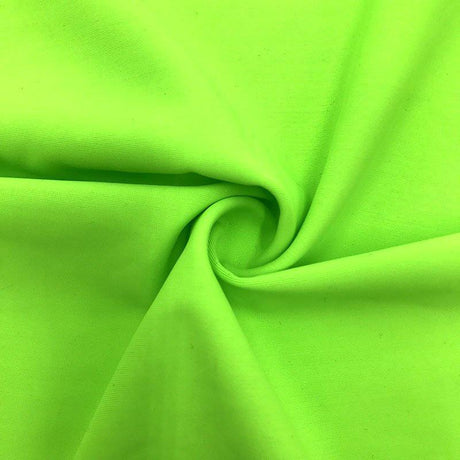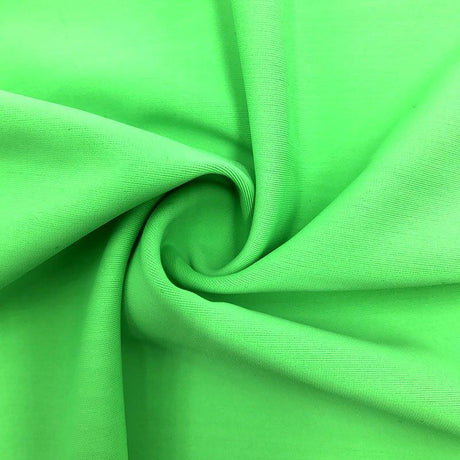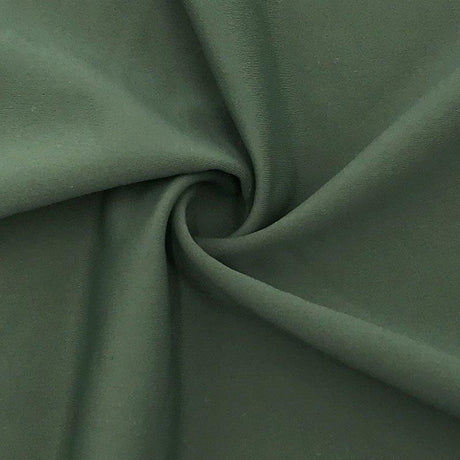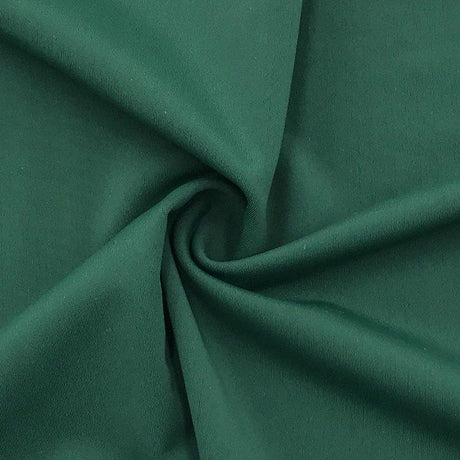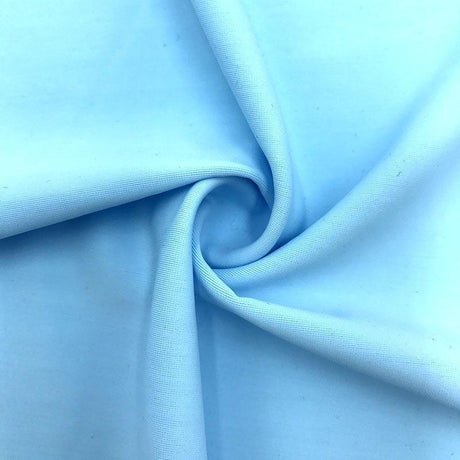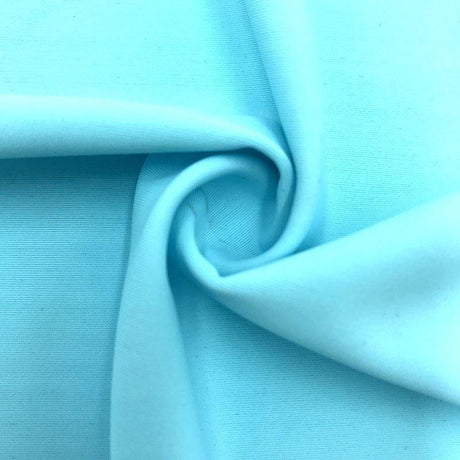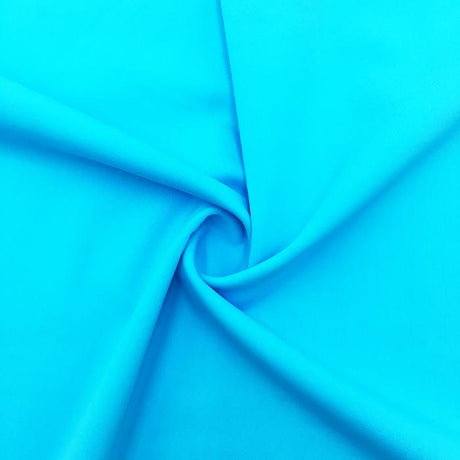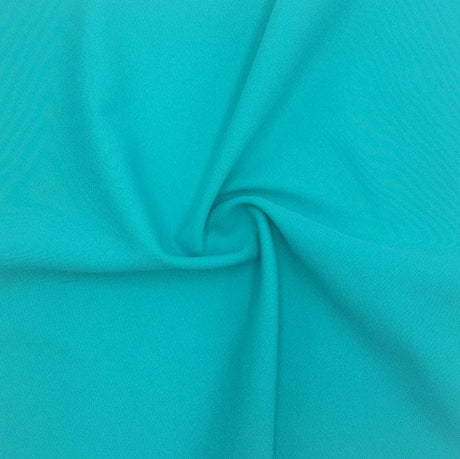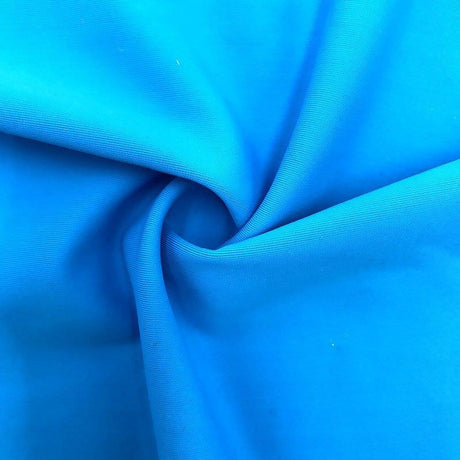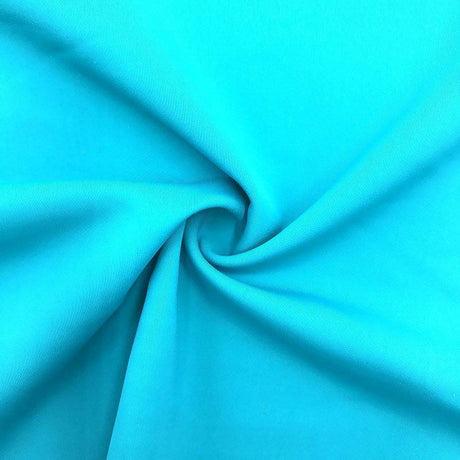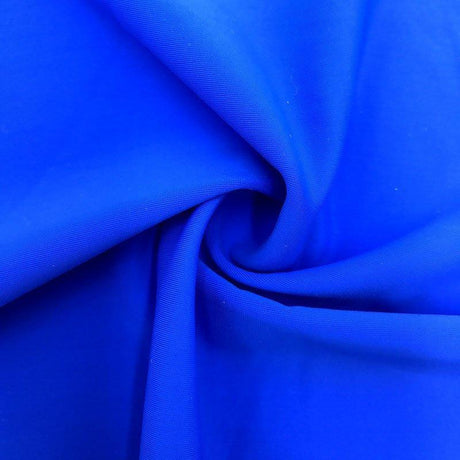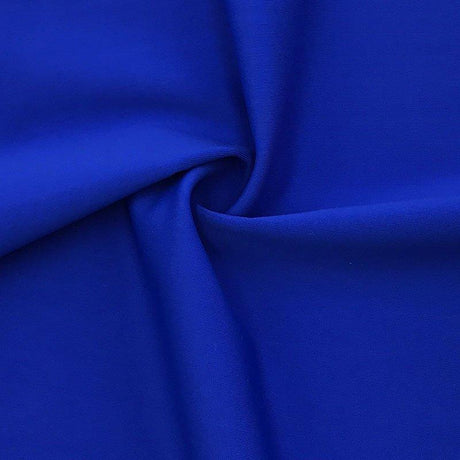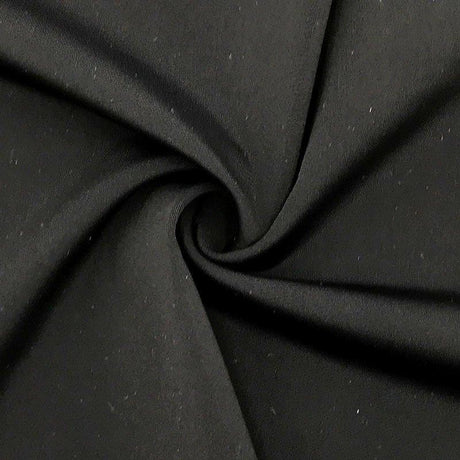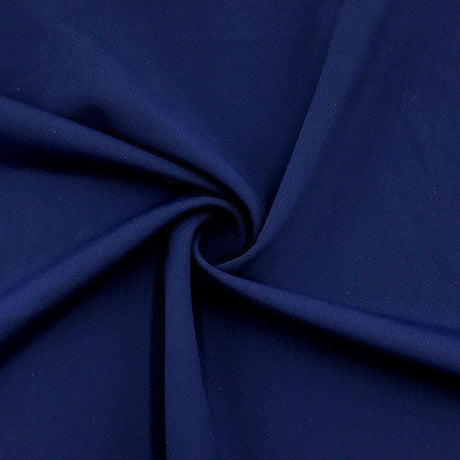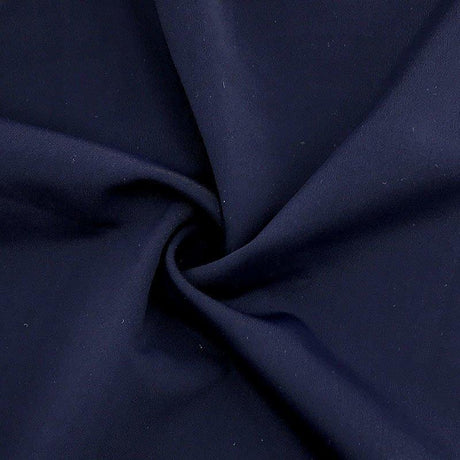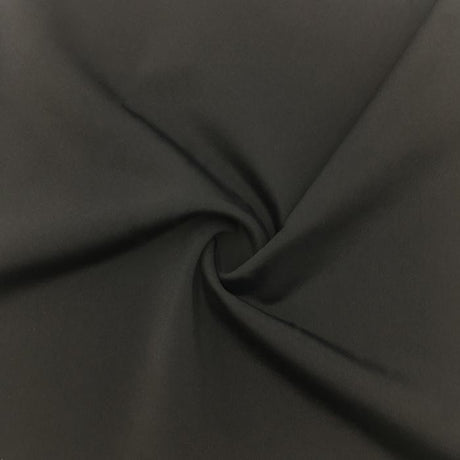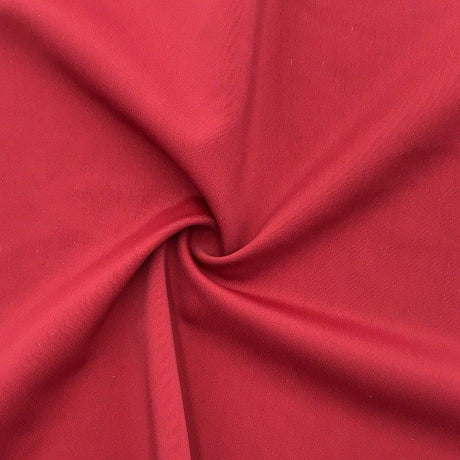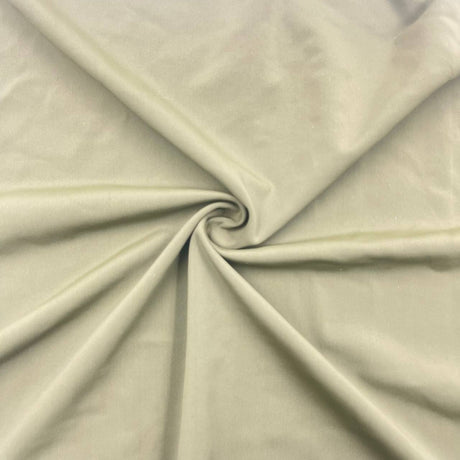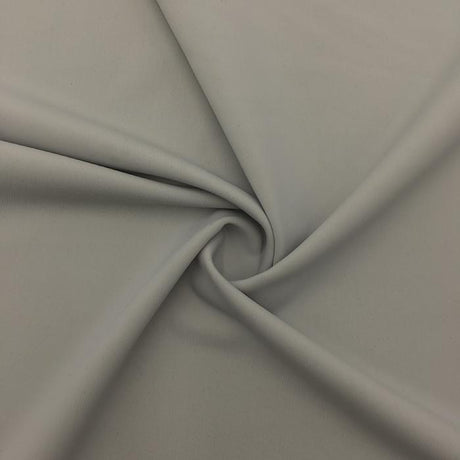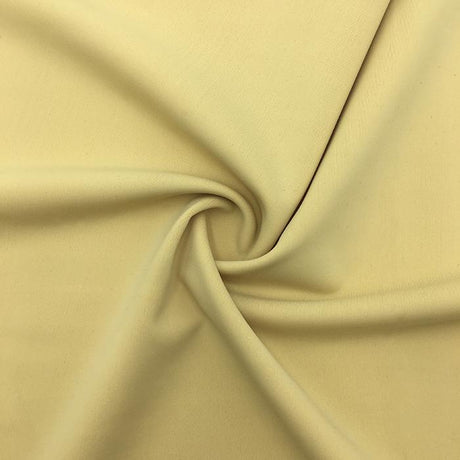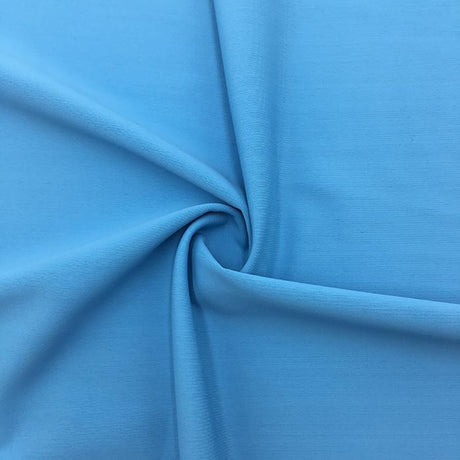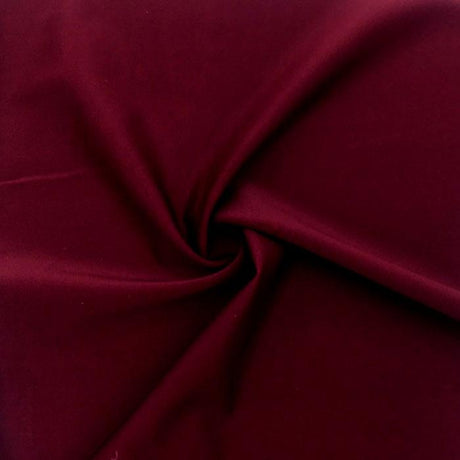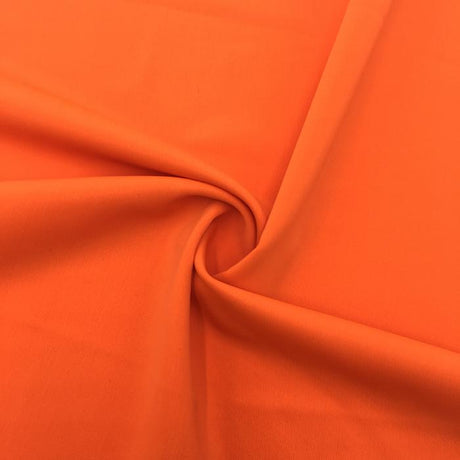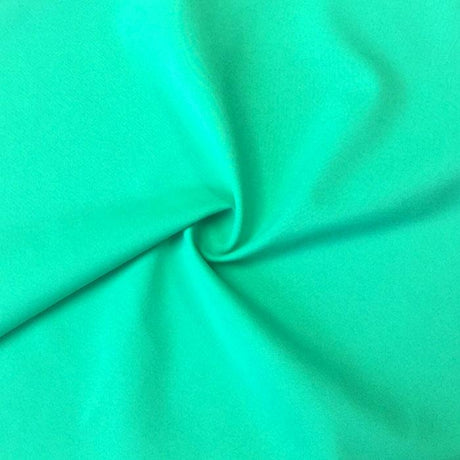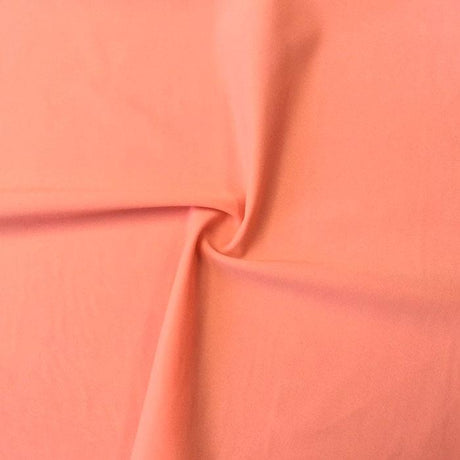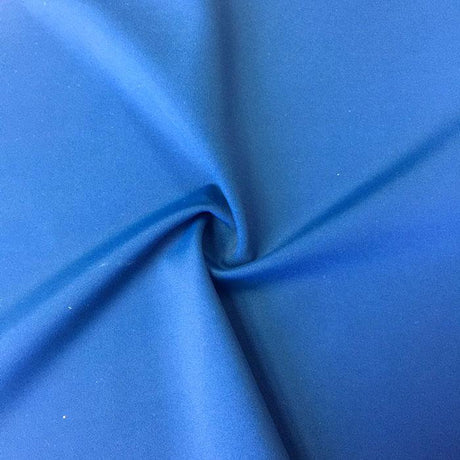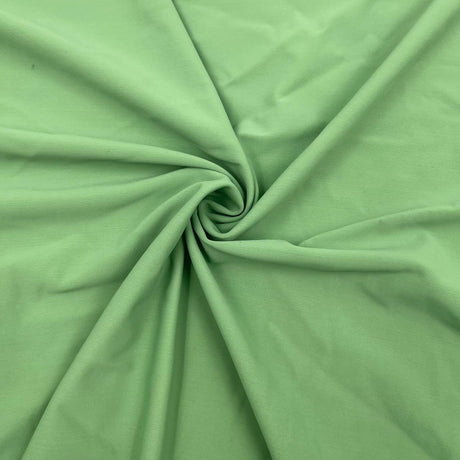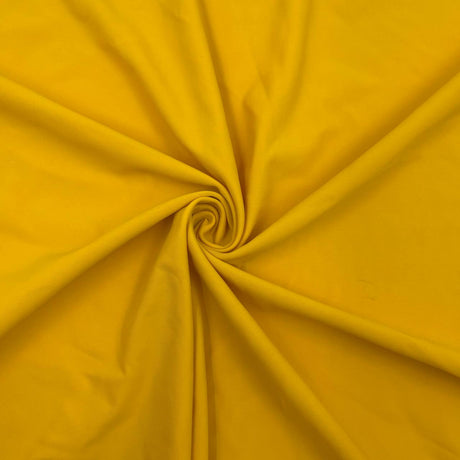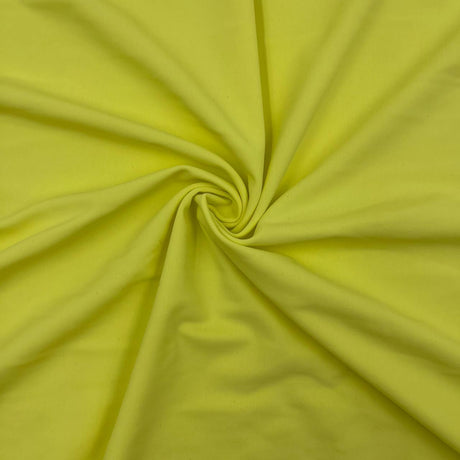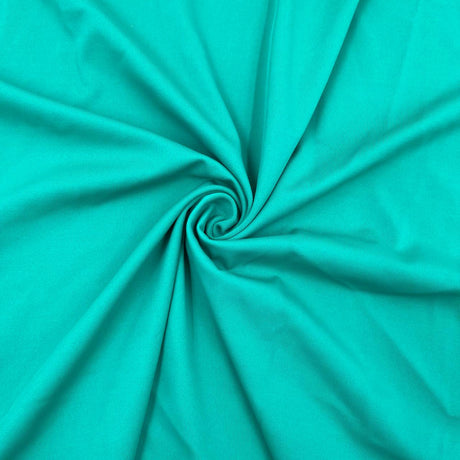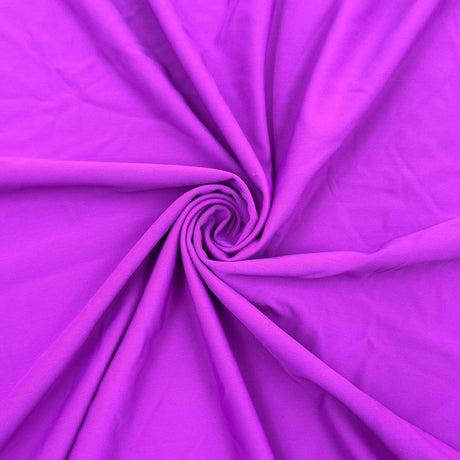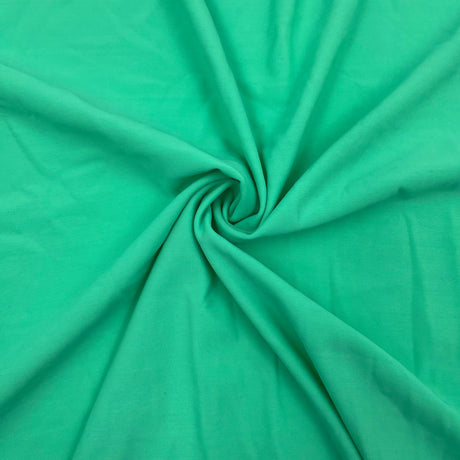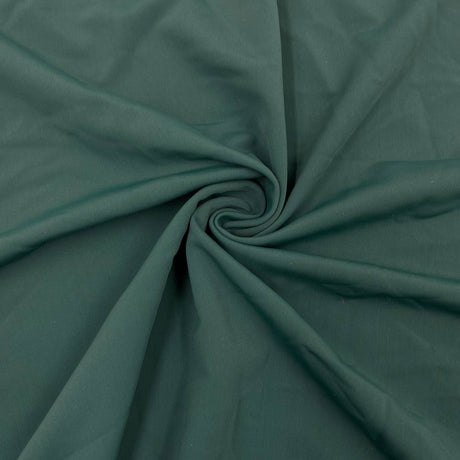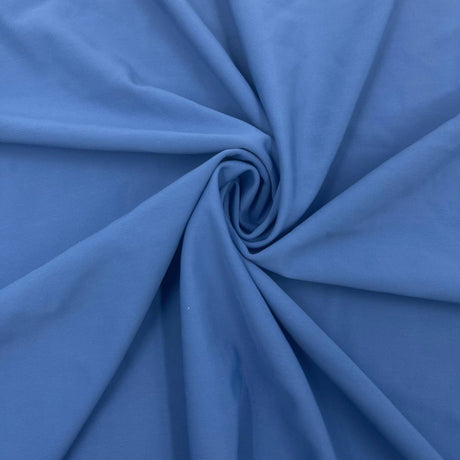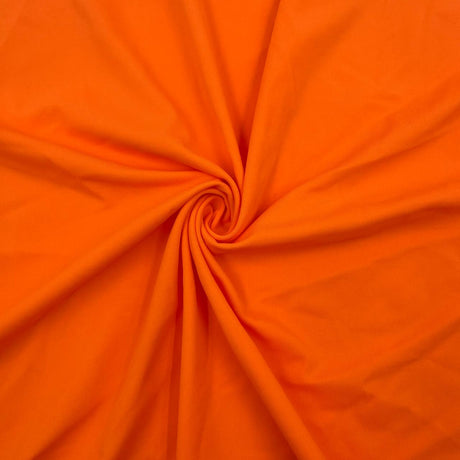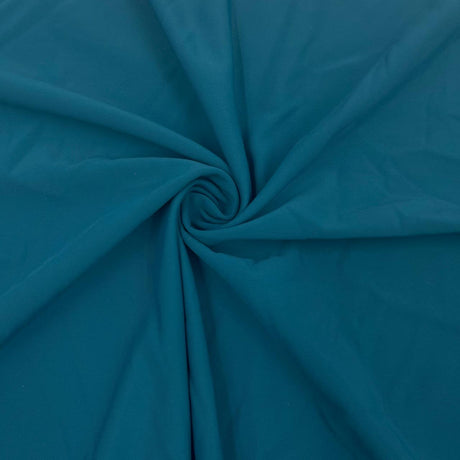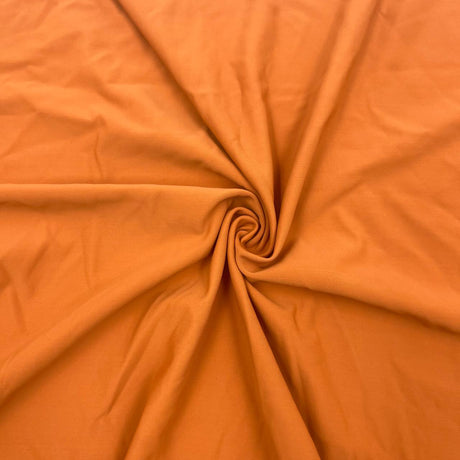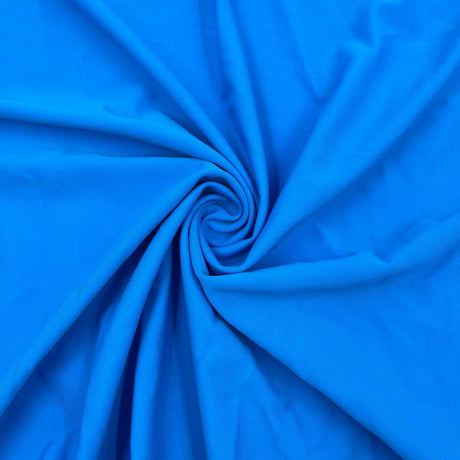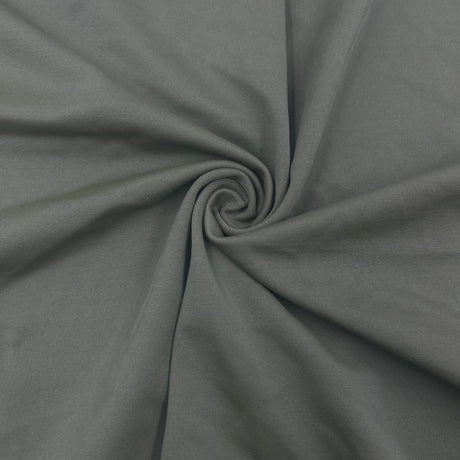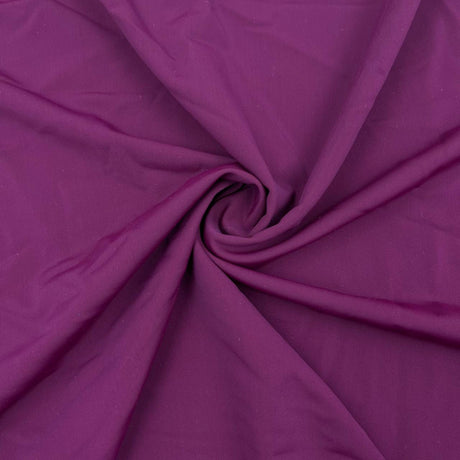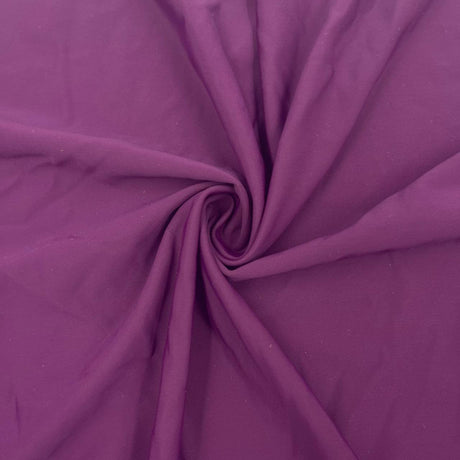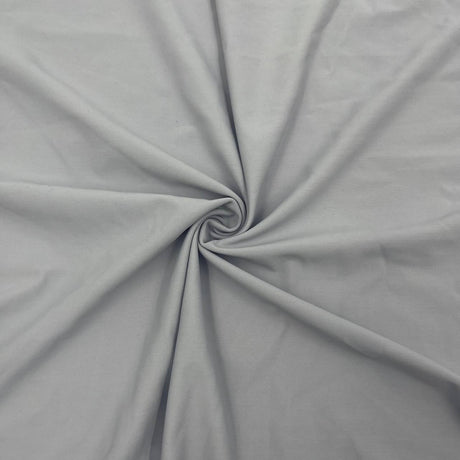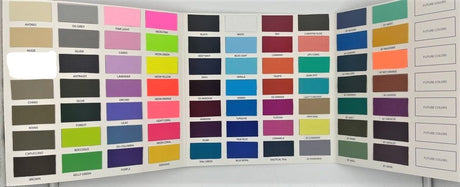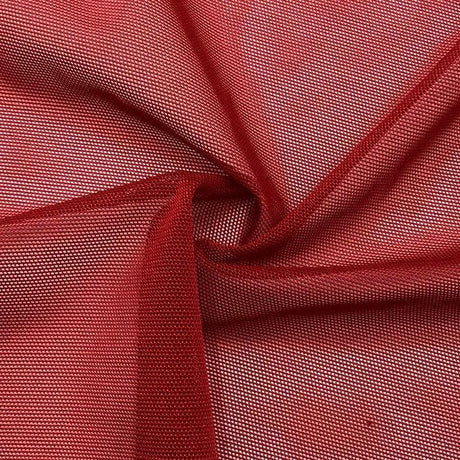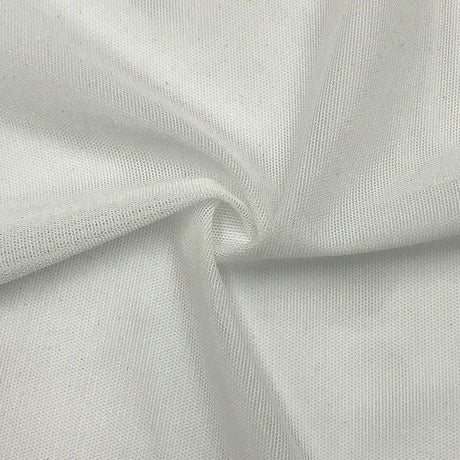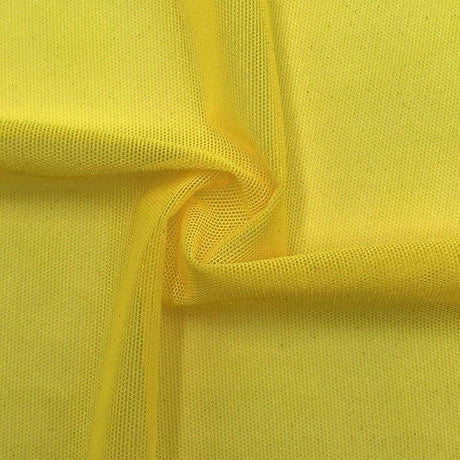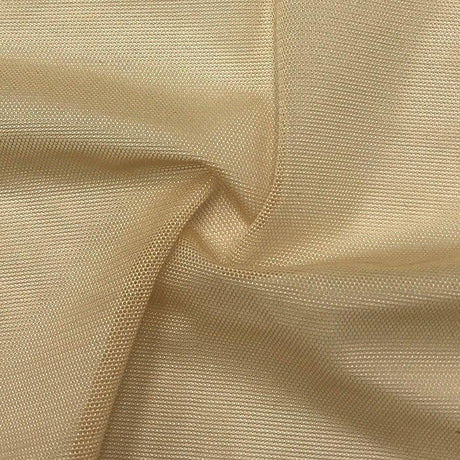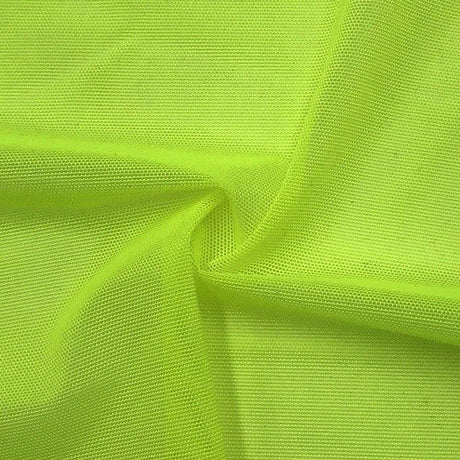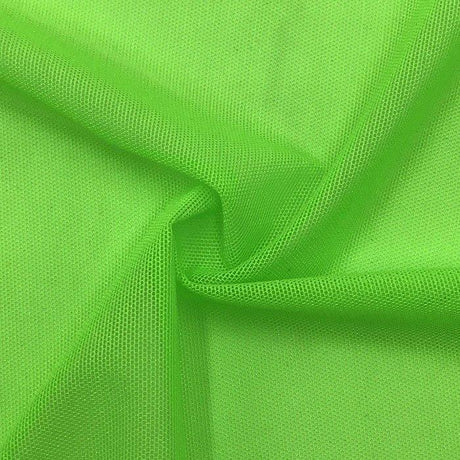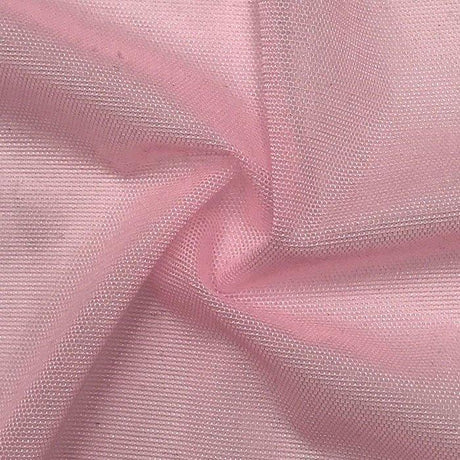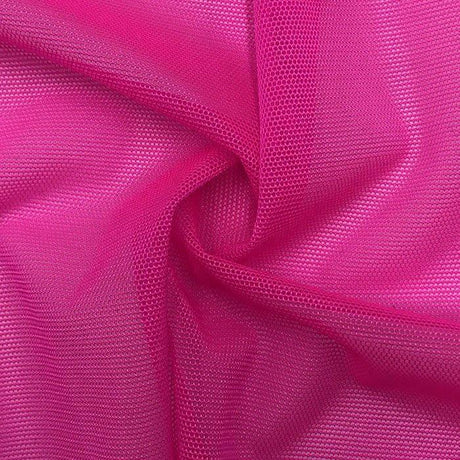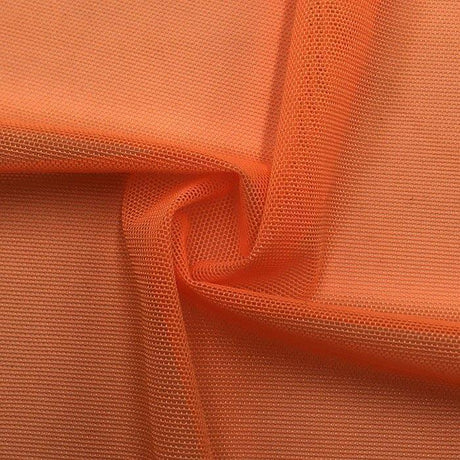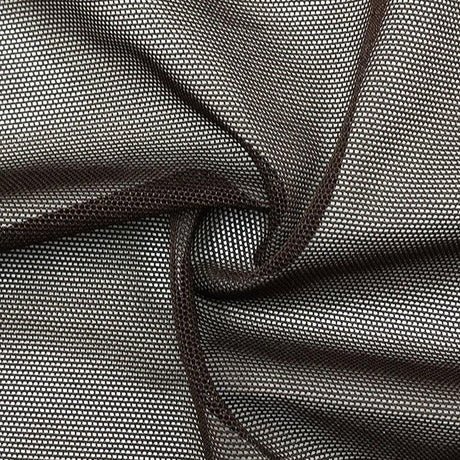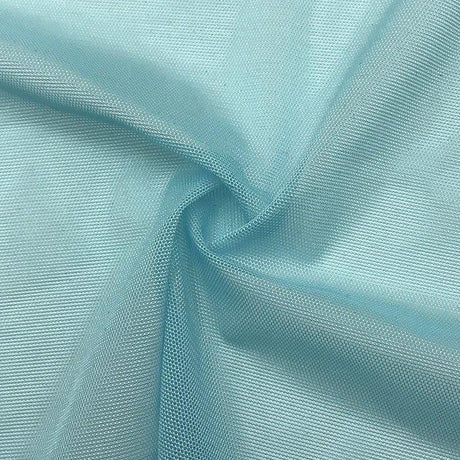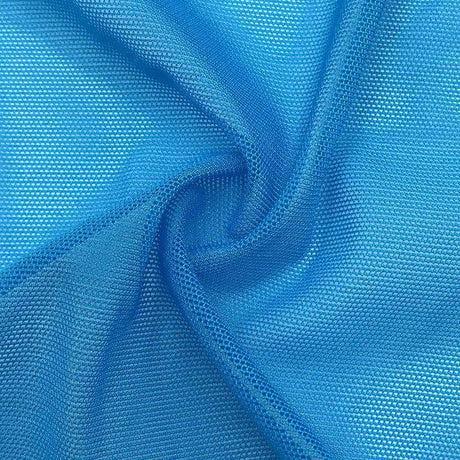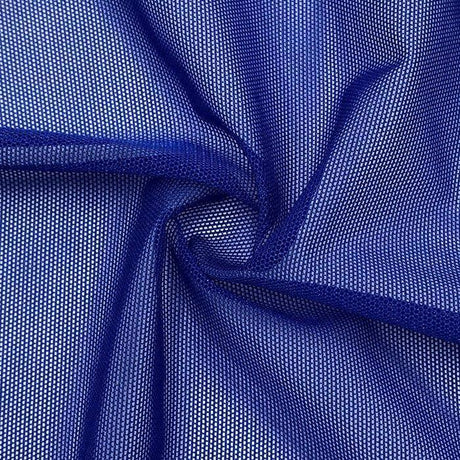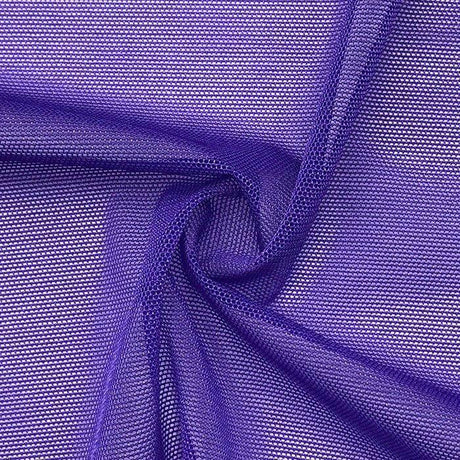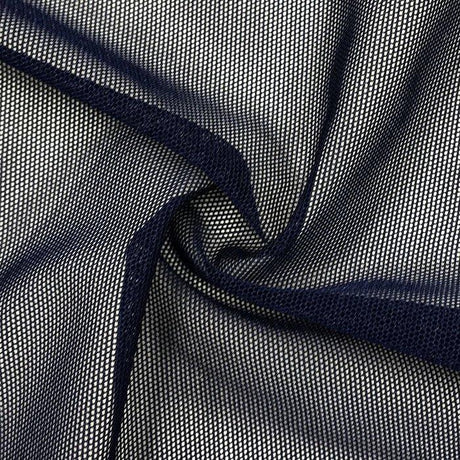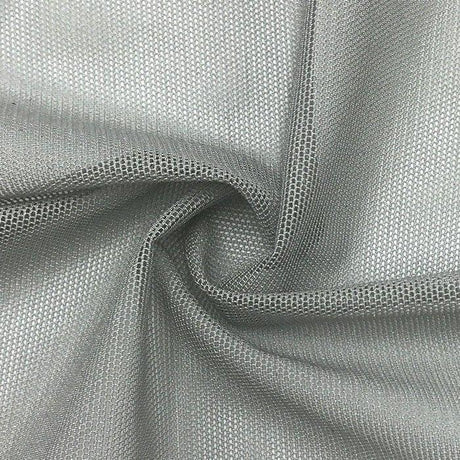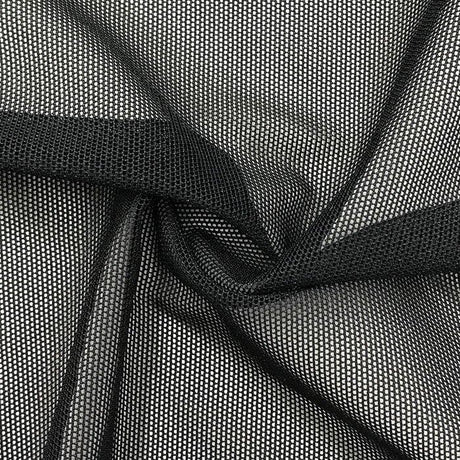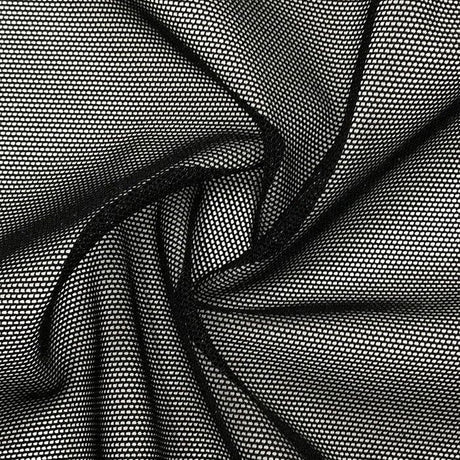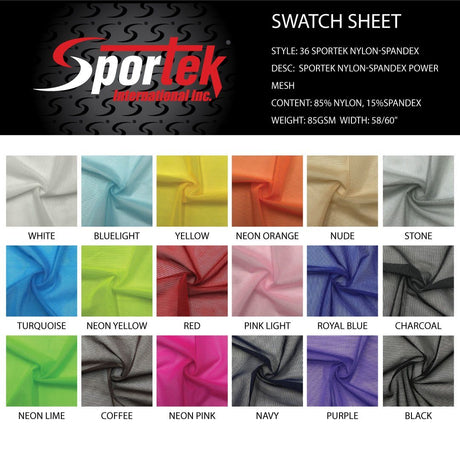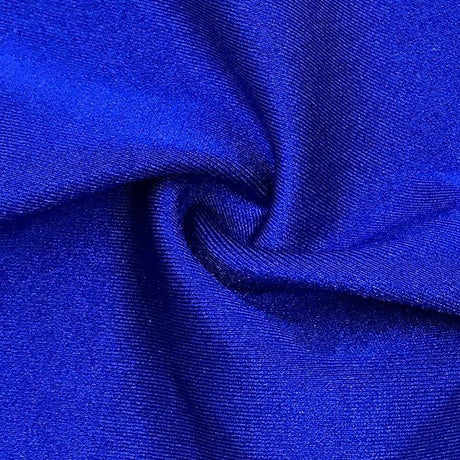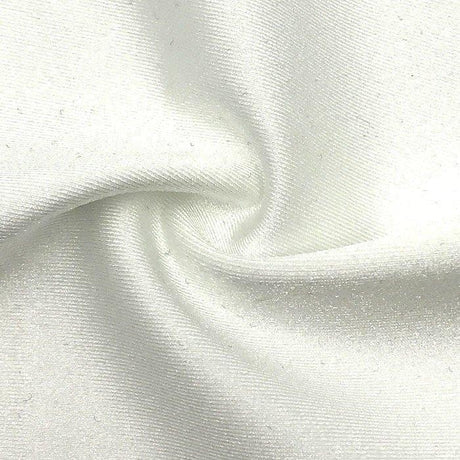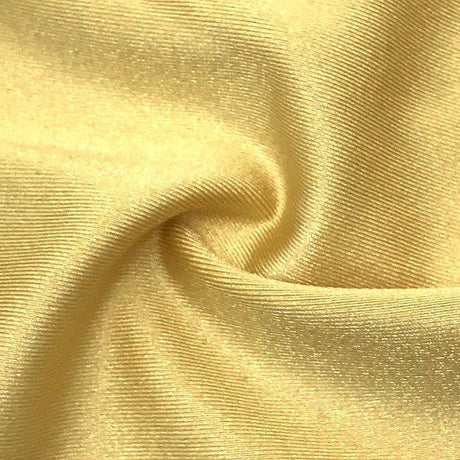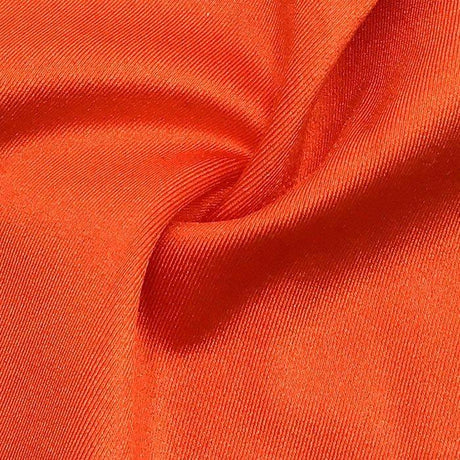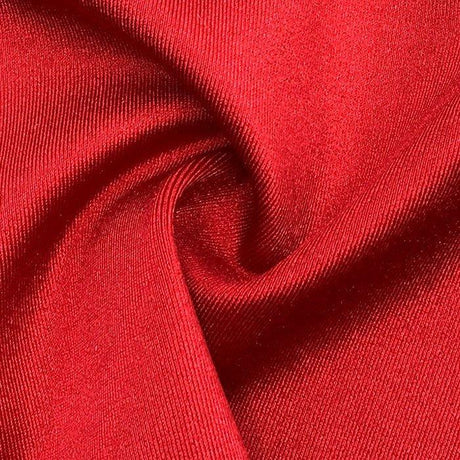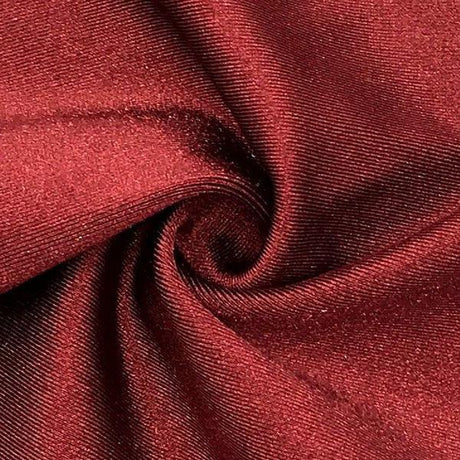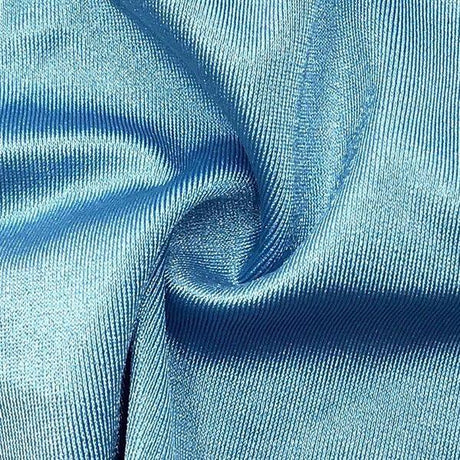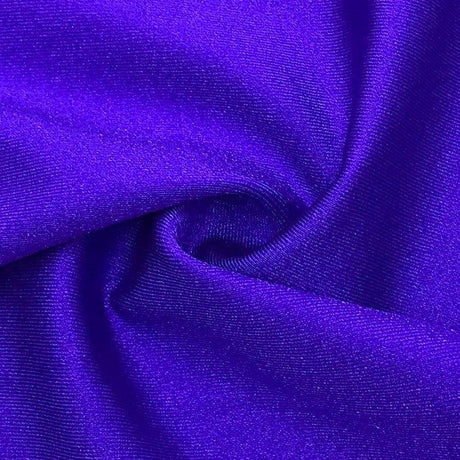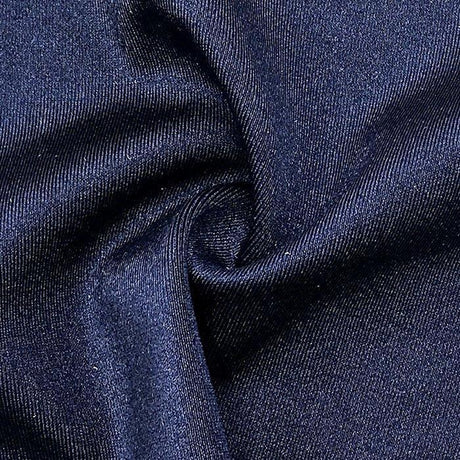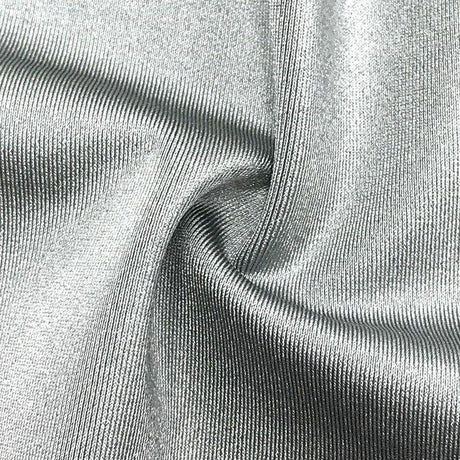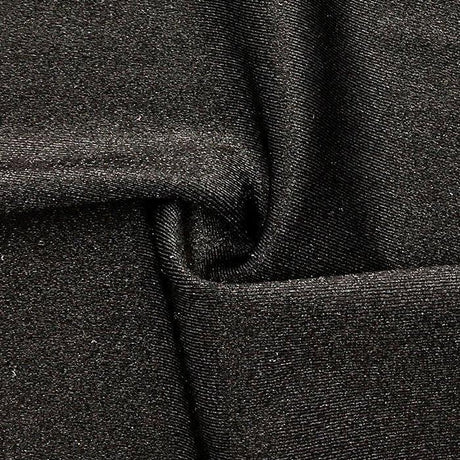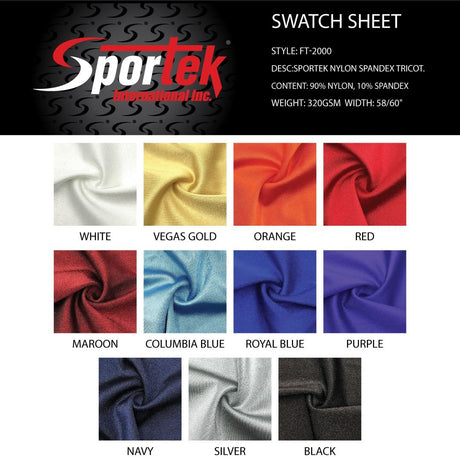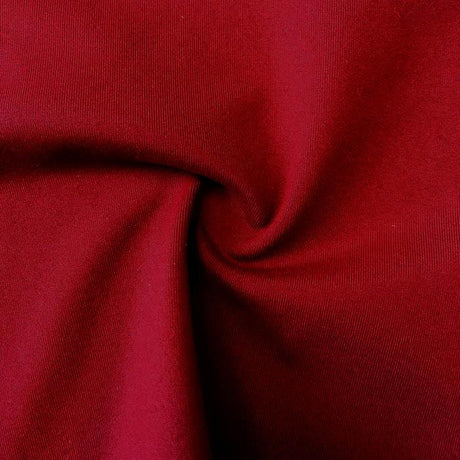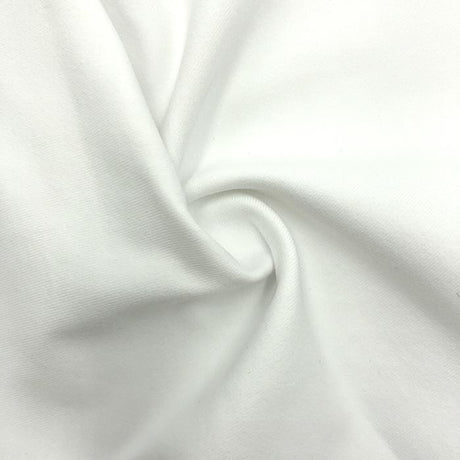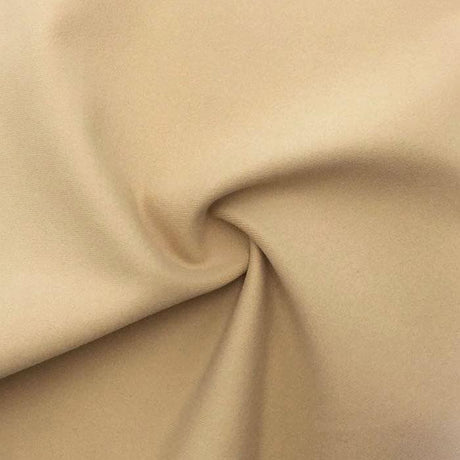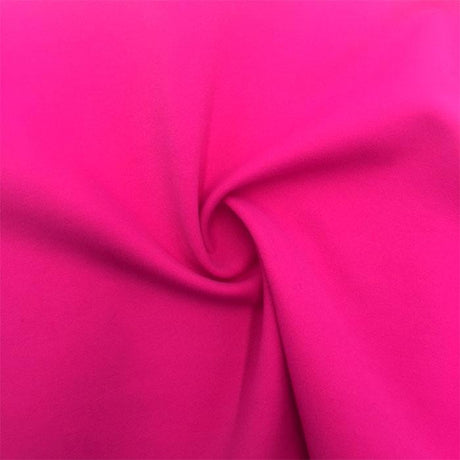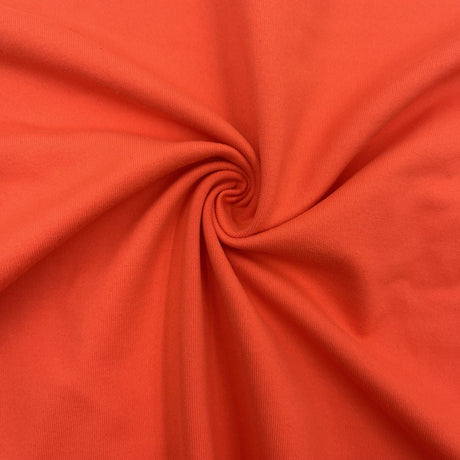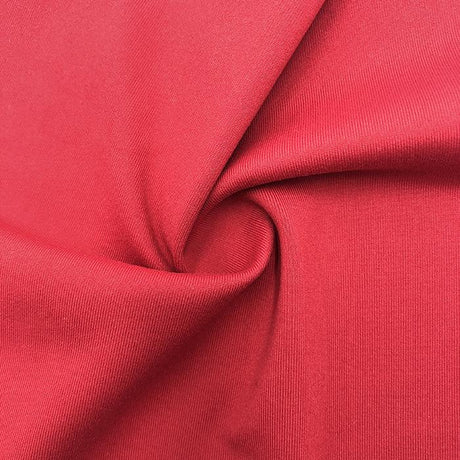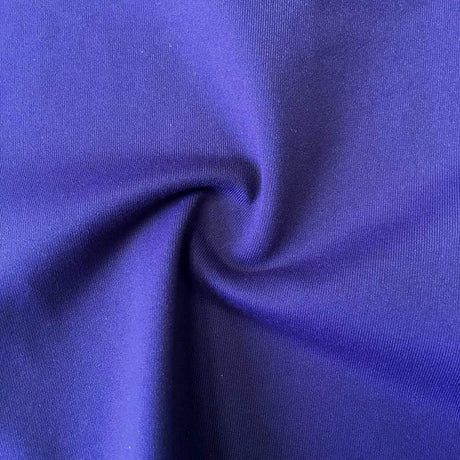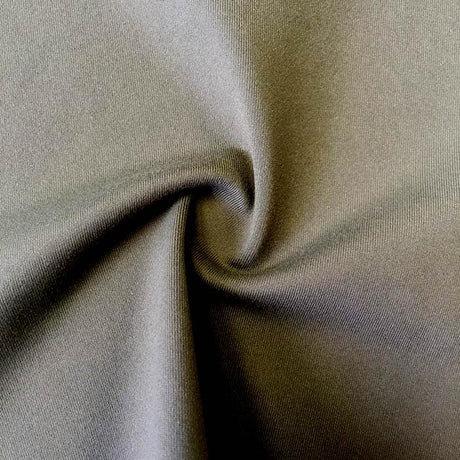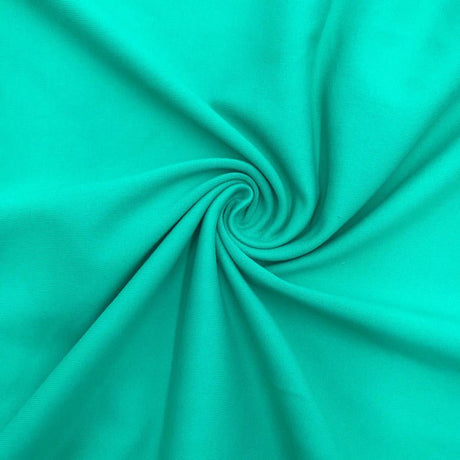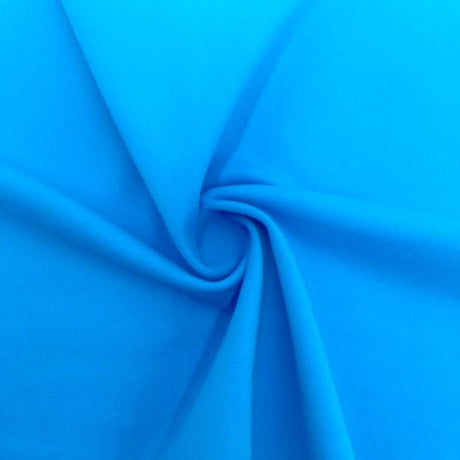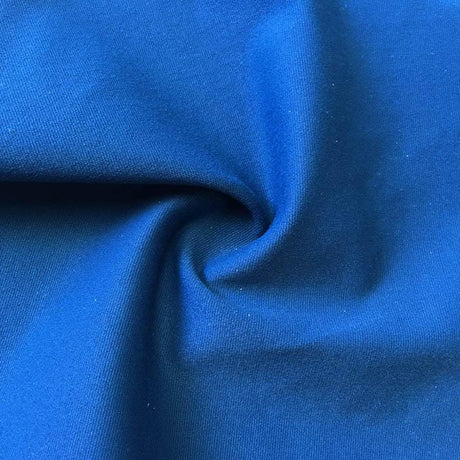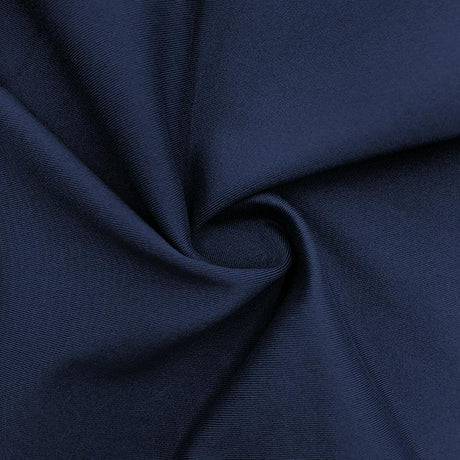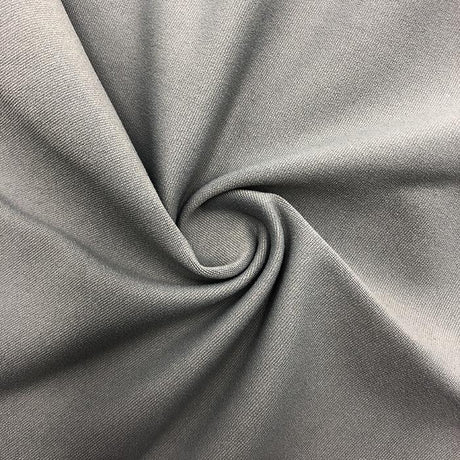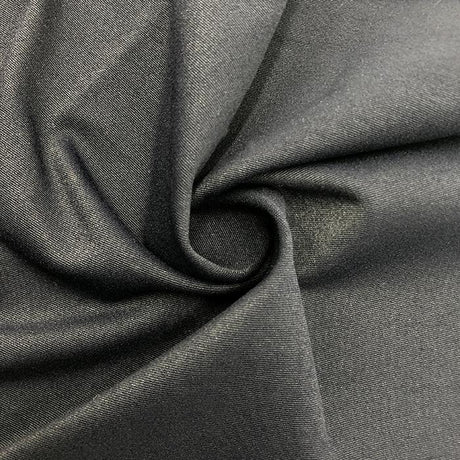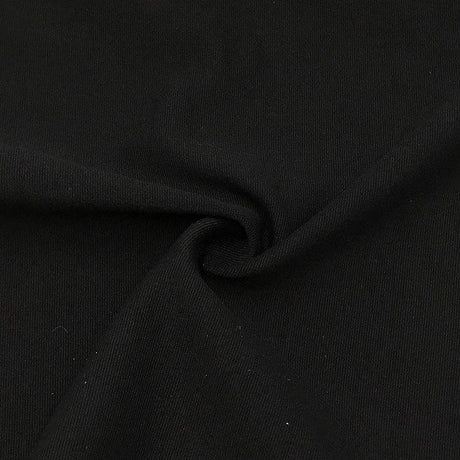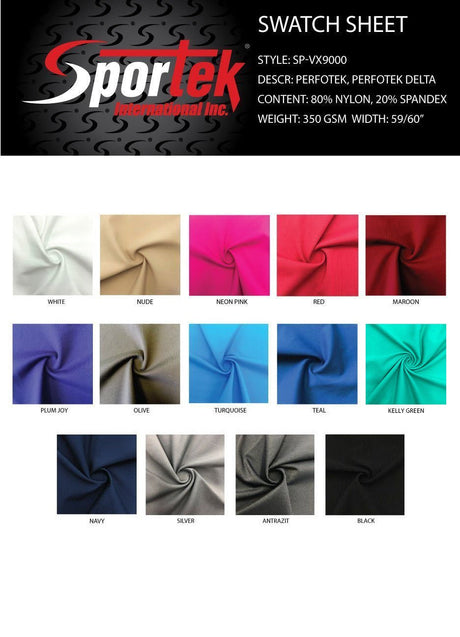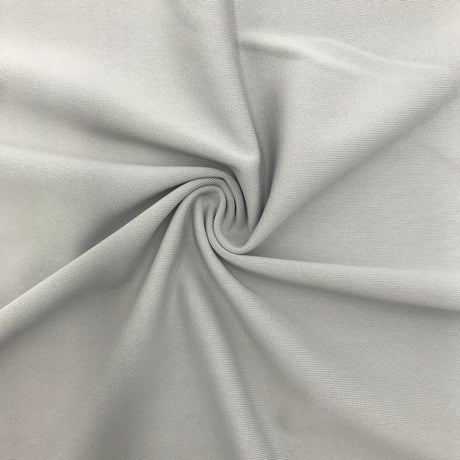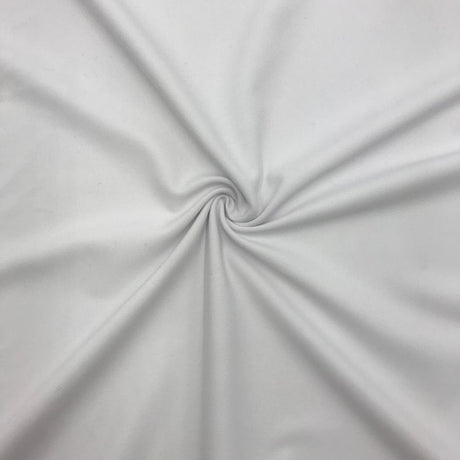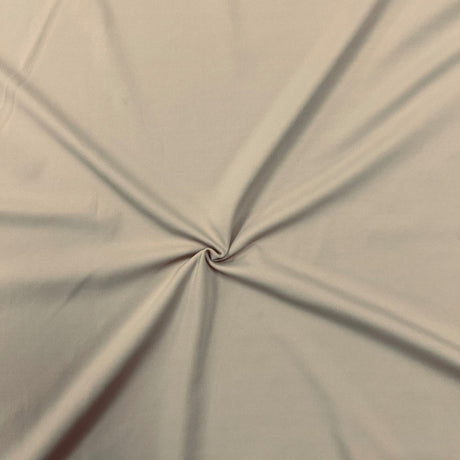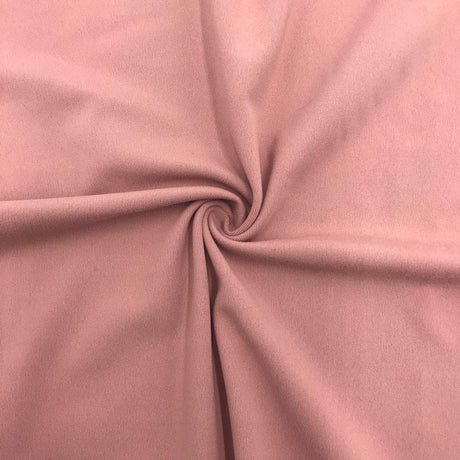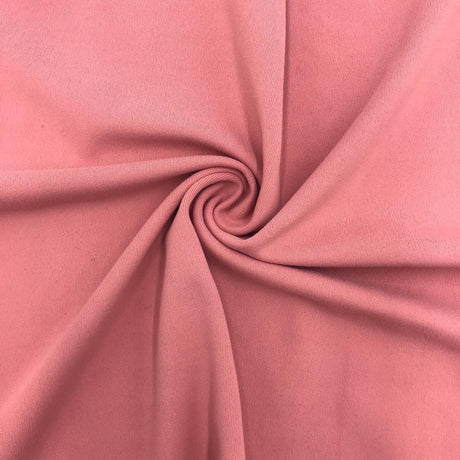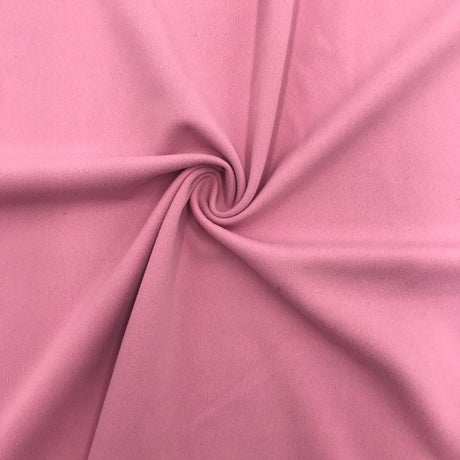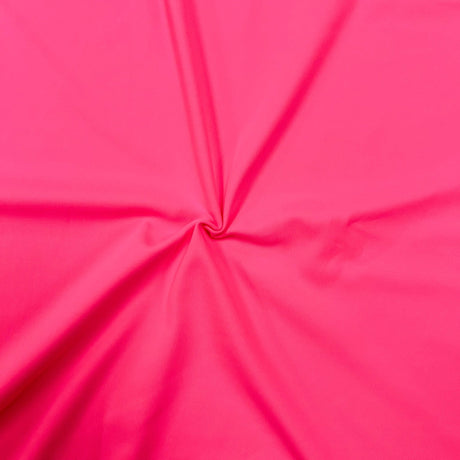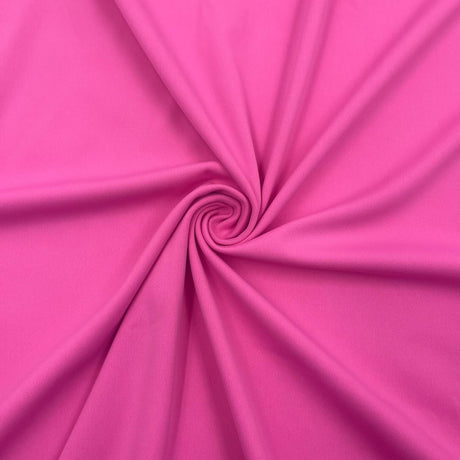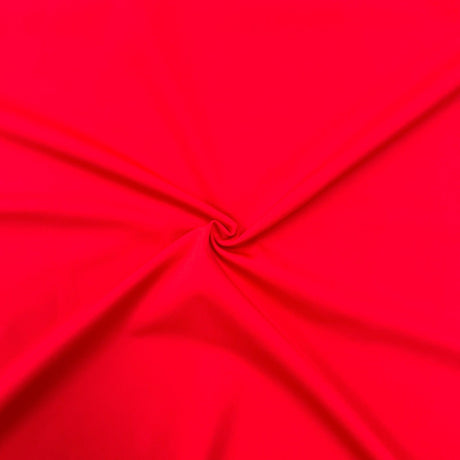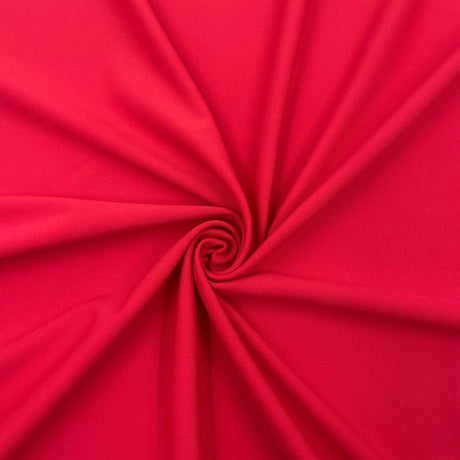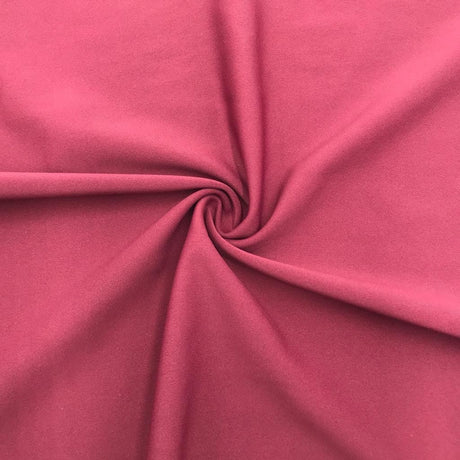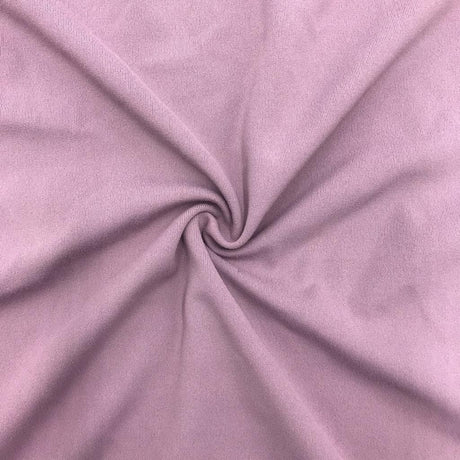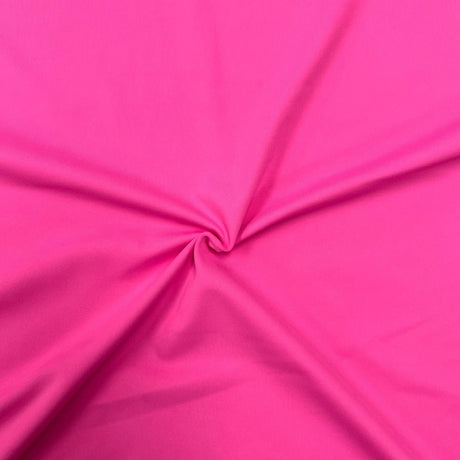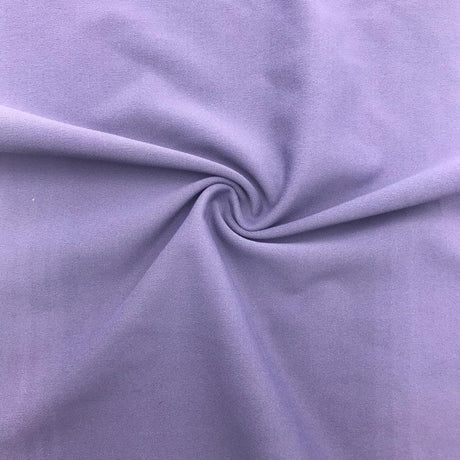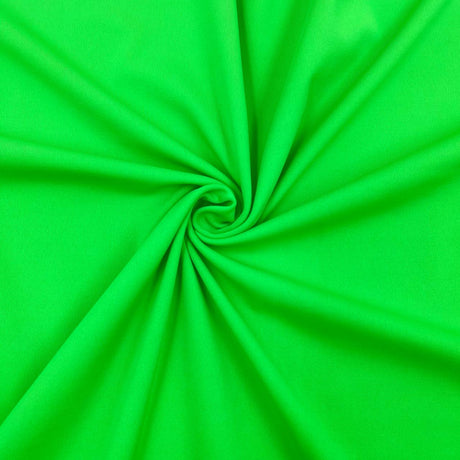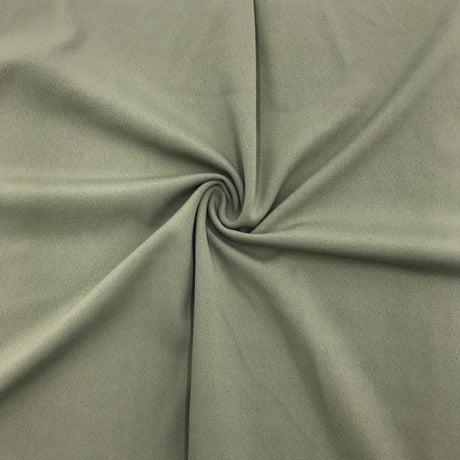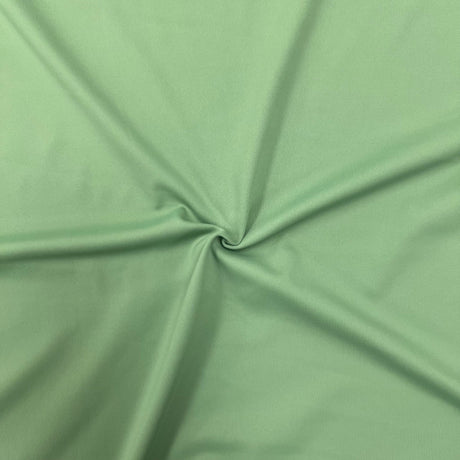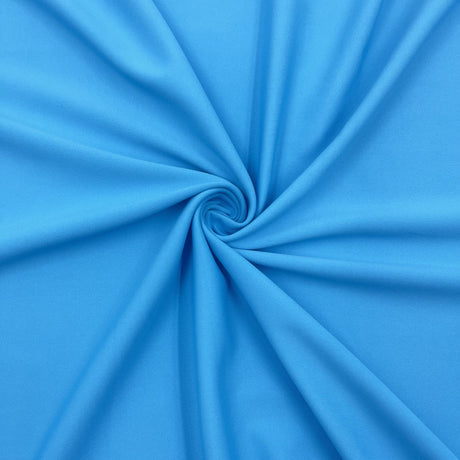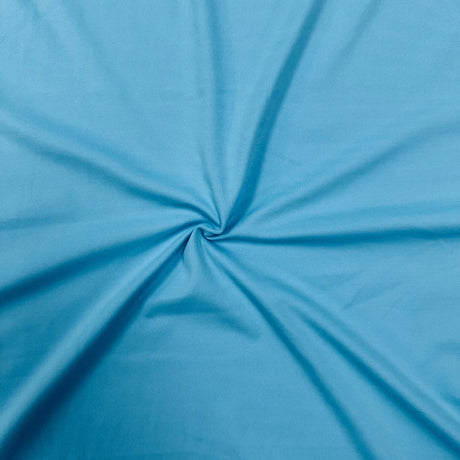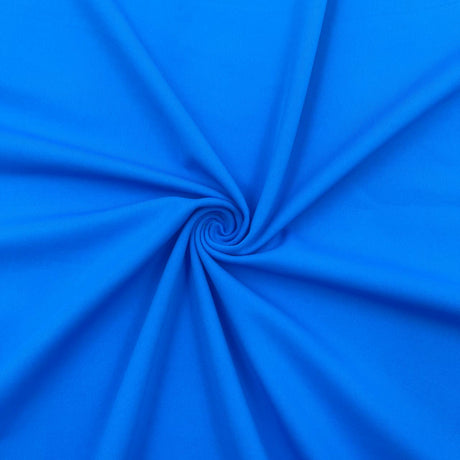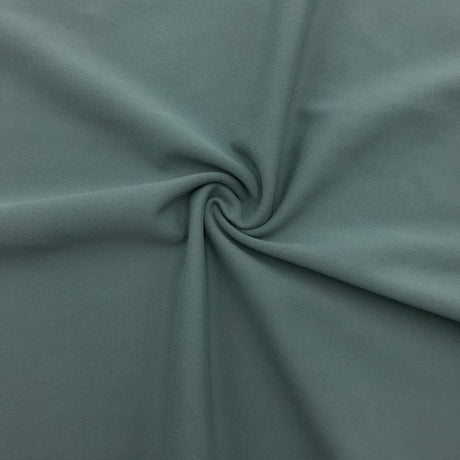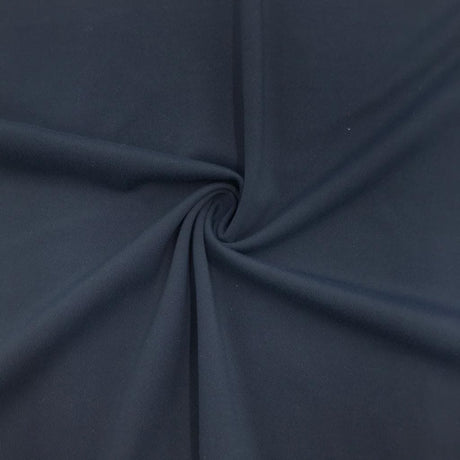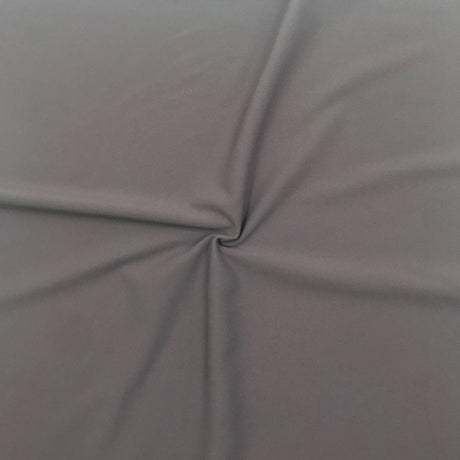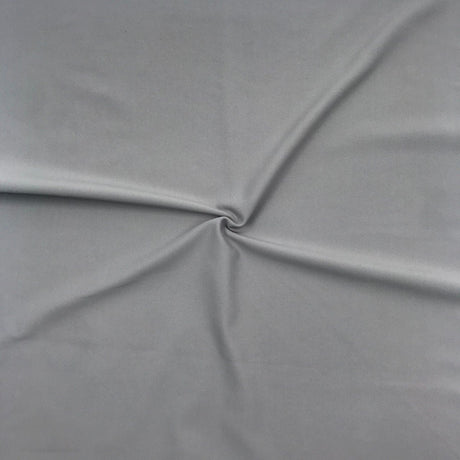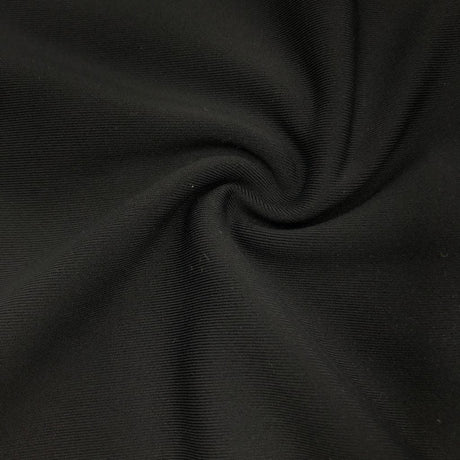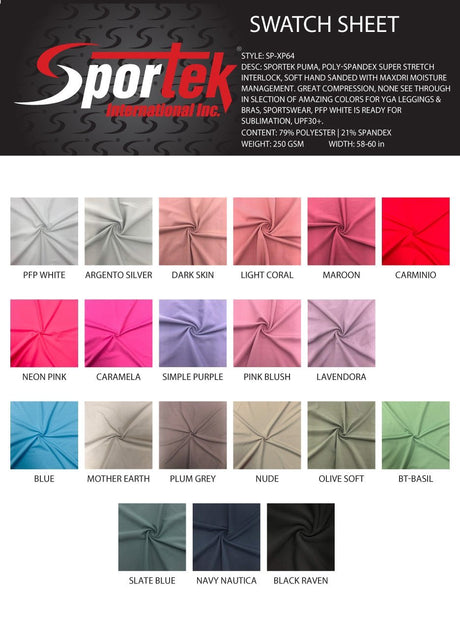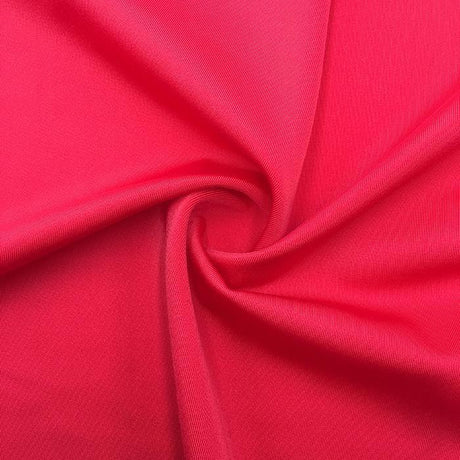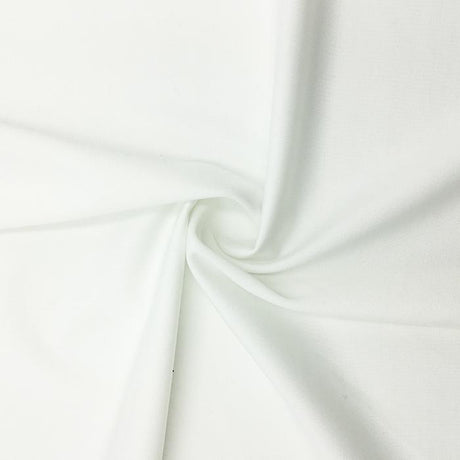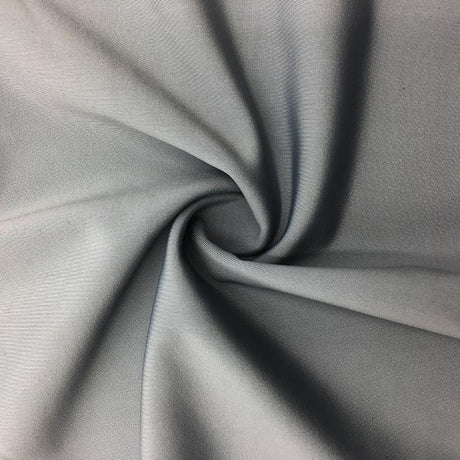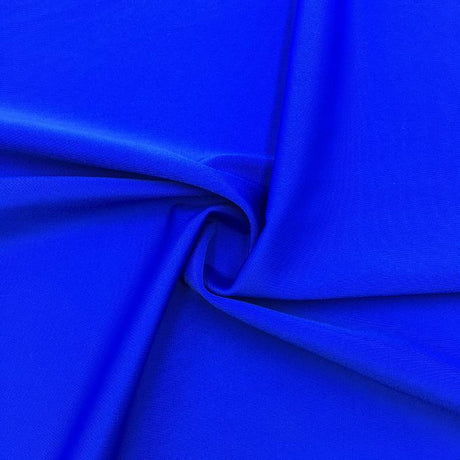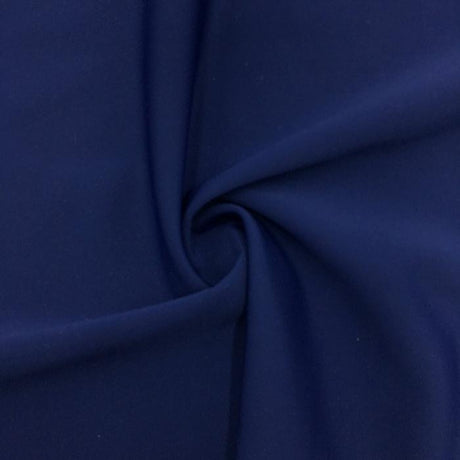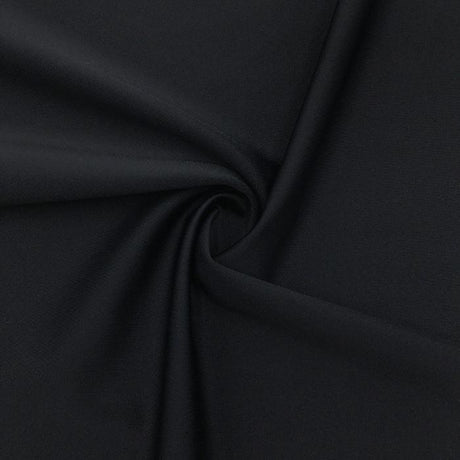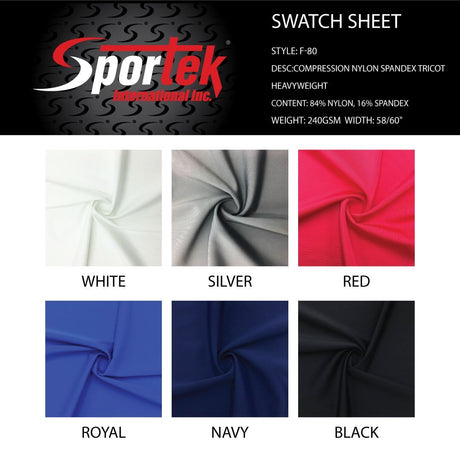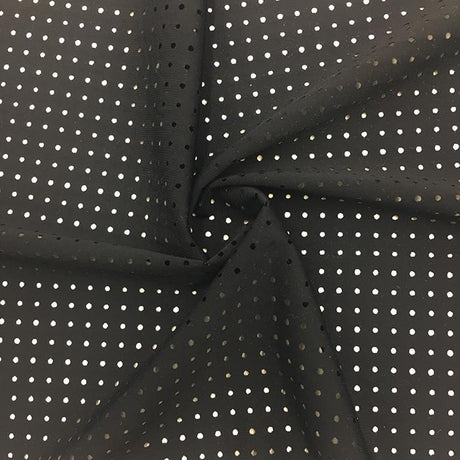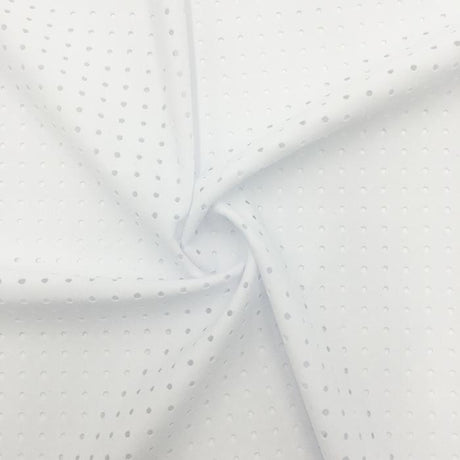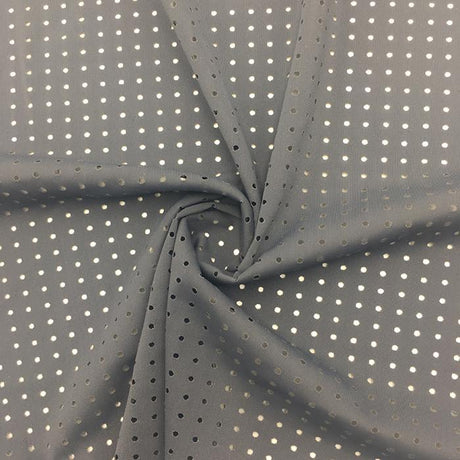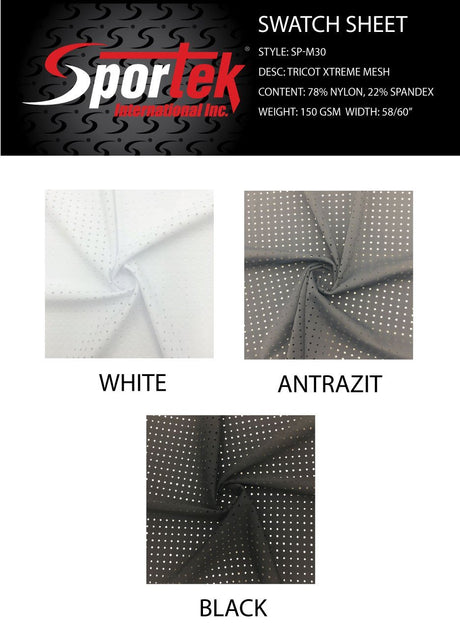To understand why a simple needle and thread are so important, you must first understand the fundamental conflict between a sewing machine and spandex.
1. The Needle-and-Fabric Mismatch
A standard, universal sewing machine needle has a sharp, pointed tip. This is perfect for piercing through the tightly woven fibers of a woven fabric like cotton or denim. However, spandex is a knit fabric, meaning it is made of interlocking loops of yarn. When a sharp needle punctures this structure, it can snag, tear, or break the stretchy fibers, leading to:
- Skipped Stitches: The damage to the fibers can prevent the bobbin hook from catching the needle's thread loop, causing stitches to be missed.
- Fabric Damage: The piercing action can create small holes or runs in the fabric, which can quickly turn into a visible defect.
- Popping Sounds: You'll often hear a loud "pop" as the sharp needle breaks a stretchy fiber, which is a clear sign that you are damaging your fabric.
2. The Thread-and-Stretch Mismatch
A standard, all-purpose thread is often made from a blend of cotton and polyester. While this is great for non-stretchy fabrics, it has very little give. A garment made with spandex needs a seam that can stretch and recover with the fabric.
- The Problem: If you sew a spandex seam with a non-stretchy thread, the thread will have nowhere to go when the fabric is stretched. The seam will then act as a rigid line on a flexible surface, and the thread will inevitably snap. This is the notorious "popping seam" problem that can ruin a finished project.
The solution to these two problems is a simple one: use a needle and thread that are designed to work in harmony with the stretchy, dynamic nature of spandex.
Part 1: The Needle - The Most Critical Choice
Your needle is the single most important tool for sewing spandex. A new, high-quality, and correctly chosen needle will prevent a majority of the common problems.
1. Ballpoint Needle vs. Stretch Needle
While these two are often confused, they are designed for slightly different applications.
- Ballpoint Needles: A ballpoint needle has a rounded tip that pushes the fabric fibers aside as it passes through, rather than piercing them. This makes it a great choice for medium-weight knits and other fabrics where you want to avoid damaging the fibers.
- Stretch Needles: A stretch needle is a specialized type of ballpoint needle designed specifically for highly elastic fabrics like spandex, Lycra, and power net. It has a more rounded tip, a special eye, and a deep scarf that helps to prevent skipped stitches by ensuring the bobbin hook can catch the thread, even on the stretchiest fabrics.
- Our Recommendation: For most spandex projects, especially those with high stretch (50% or more), a stretch needle is the superior choice. While a ballpoint needle can work for some projects, a stretch needle is a must-have for a professional and seamless finish. Brands like Schmetz are the industry standard and offer a wide variety of sizes.
2. Super Stretch Needles
This is a newer innovation for ultra-elastic and thick fabrics. A super stretch needle has an even more pronounced ballpoint and a specially designed eye and scarf to handle the most challenging of spandex projects, like activewear with a very high percentage of Lycra or fabrics that are particularly dense. If you are sewing a high-performance compression garment or a piece of swimwear, a super stretch needle is a great tool to have in your arsenal.
3. Needle Size Matters
Choosing the correct needle size is crucial for preventing damage. The rule of thumb is to match the needle size to the weight of your fabric.
- Light- to Mid-Weight Spandex: For fabrics with a weight of 150-220 GSM, a needle size of 75/11 is an ideal starting point.
- Heavy-Weight Spandex: For fabrics with a weight of 250+ GSM, like high-compression activewear or dancewear, a needle size of 90/14 is a better choice. A needle that is too small for a heavy fabric can bend or break, while a needle that is too large for a light fabric can create visible holes.
4. Twin Needles: The Secret to Professional Hems
For a clean, professional, and stretchy hem, a twin needle is an indispensable tool. It has two needles on a single shaft that create two parallel lines of stitching on the top of the fabric and a zig-zag stitch on the bottom. This allows the hem to stretch without popping the thread. Make sure to buy a twin stretch needle, as a universal twin needle will not have the necessary ballpoint tips.
Part 2: The Thread - The Unsung Hero
While the needle does the hard work of piercing the fabric, the thread is what holds it all together. A flexible, strong thread is essential for a seam that will last.
1. Polyester Thread: The Versatile Workhorse
For most spandex projects on a home sewing machine, an all-purpose polyester thread is an excellent choice.
- Why it works: Polyester thread has a natural, subtle stretch to it, which allows it to give and recover with the fabric. It is also incredibly strong, durable, and colorfast, which means it will hold up to a lot of wear and washing.
- Our Recommendation: For most projects, a good quality polyester thread from a reputable brand like Gutermann or Coats is all you need.
2. Woolly Nylon Thread: Maximum Elasticity Specialist
This is a specialty thread that is a game-changer for seams that need maximum stretch and a soft, comfortable finish.
- Why it works: Woolly nylon thread is a textured, stretchy thread that has a very high elongation. It is most commonly used in the loopers of a serger to create a soft, stretchy, and durable seam that is perfect for swimwear and activewear.
- Our Recommendation: If you are a professional sewer or are making garments that need to withstand a lot of stress, woolly nylon is an excellent choice for a serger. It can also be hand-wound onto a bobbin for a standard machine, but this can be tricky.
3. Nylon Thread: A Strong and Flexible Alternative
Nylon thread is another great option for spandex. It has a high tensile strength and a good amount of stretch, making it a reliable choice for seams that need to be both strong and flexible.
4. The Thread to Avoid: Cotton
Never use cotton thread for spandex. Cotton has no elasticity and will snap immediately when the fabric is stretched. It is the number one cause of popping seams in spandex garments.
Part 3: The Synergy of Needle and Thread
The needle and thread are just two parts of a larger system. To achieve a professional finish, you must also consider the settings on your machine.
1. Choosing a Stretch Stitch
As we’ve established, a straight stitch is a recipe for disaster. You must use a stretch stitch.
- The Zig-Zag Stitch: This is the most common stretch stitch. It creates a flexible seam that will not snap under tension. A narrow zig-zag stitch with a length of 2.0 and a width of 0.5 is a great starting point for most spandex projects.
- The Lightning Bolt Stitch: This is a specialized stretch stitch that is available on many modern sewing machines. It creates a strong, flat, and very stretchy seam that is perfect for a variety of projects.
- The Serger: If you have a serger (overlock machine), it is the ultimate tool for sewing spandex. It simultaneously stitches, trims, and finishes a seam, creating a professional-looking, highly durable, and incredibly stretchy seam that is perfect for activewear.
2. Adjusting Tension and Presser Foot Pressure
- Presser Foot Pressure: If your fabric is stretching out or puckering as you sew, try lowering the pressure on your presser foot. This will reduce the amount of force the presser foot is applying to the fabric, allowing it to feed through the machine more smoothly.
- Tension: Spandex can be sensitive to thread tension. If your seams are puckered or the thread is breaking, try lowering the upper thread tension. Always do a test run on a scrap piece of fabric to find the perfect balance.
|
The Problem |
The Cause |
The Solution |
|
My thread keeps breaking. |
You used the wrong needle or thread, or the tension is too high. |
Switch to a new stretch needle and a high-quality polyester thread. Lower the upper thread tension. |
|
I have skipped stitches. |
You used the wrong needle. |
Switch to a new stretch needle. Make sure the needle is correctly installed and not bent. |
|
My seams are popping. |
You used a straight stitch or a thread with no stretch. |
Use a zig-zag stitch or a lightning bolt stitch. Use a high-quality polyester or woolly nylon thread. |
|
My fabric is puckering. |
You were pulling the fabric or the tension is too high. |
Do not pull the fabric as you sew. Lower your upper thread tension and presser foot pressure. |
I will write a comprehensive, SEO-optimized content piece of at least 3000 words in fluent and unique English for the topic: "Guide to Choosing the Right Needle and Thread for Sewing Various Types of Spandex."
This is a very practical and technical topic, directly addressing a common problem for home sewers and small manufacturers. The target audience is primarily DIY enthusiasts, home sewers, and small business owners who use domestic machines.
I will structure the article to be a problem-and-solution guide, making it highly valuable and actionable for the reader.
Here is a plan for the content:
- Introduction: Hook the reader by acknowledging the frustration of sewing with spandex. I will frame the article as a guide that turns this challenge into a success story by revealing the right tools and techniques.
- The Core Challenge: Explain why sewing spandex is difficult, focusing on the needle and thread's role in this challenge. I'll cover how a standard needle can cause damage and a standard thread can cause popped seams.
- Part 1: The Needle - The Most Critical Choice: This will be a deep dive into needle selection.
- Ballpoint vs. Stretch Needle: I will clarify the difference between these two and explain when to use each. I'll emphasize that a stretch needle is superior for high-stretch fabrics.
- Super Stretch Needles: I'll introduce this specialized needle for ultra-elastic materials like Lycra.
- Needle Size: I'll explain the importance of matching the needle size to the fabric's weight (e.g., 75/11 for light- to medium-weight spandex, 90/14 for heavy-duty).
- Twin Needles: I'll discuss the use of twin needles for professional-looking, stretchy hems.
- Part 2: The Thread - The Unsung Hero: This section will focus on thread selection.
- Polyester Thread: I'll highlight this as the versatile workhorse, explaining its strength and slight stretch.
- Woolly Nylon Thread: I'll introduce this specialty thread for maximum stretch and softness, explaining its ideal use in serger loopers.
- Nylon Thread: I'll discuss its strength and elasticity, making it a good alternative to polyester.
- Avoiding Cotton Thread: I'll explain why cotton is a disastrous choice for spandex.
- Part 3: The Synergy of Needle and Thread: I'll explain how the needle and thread must work together with the machine settings.
- Stitch Choice: I'll explain the need for a "stretch stitch" and detail common options: zig-zag, lightning bolt, and serger.
- Tension and Presser Foot Pressure: I'll explain how to adjust these settings to prevent puckering and stretching.
- Troubleshooting Common Problems: This will be a practical FAQ-style section that addresses specific issues related to needle and thread.
- "My thread keeps breaking."
- "I have skipped stitches."
- "My seams are popping."
- Conclusion: Summarize the key takeaways and provide a strong call to action (CTA) that encourages the reader to explore the high-quality fabrics on SpandexByYard.com, as the right fabric is always easier to sew.
I will ensure the language is fluent, unique, and tailored to a home sewer. The word count will exceed 3000 words. I will use clear headings and subheadings to improve readability and SEO. I will also use the search results to reinforce my points about Schmetz and other needle brands and the use of polyester thread. In the passionate world of home sewing and custom design, there are few fabrics as rewarding and yet as challenging as spandex. Its incredible elasticity and smooth hand feel make it the perfect medium for creating high-performance activewear, comfortable loungewear, and form-fitting fashion garments. But for many, the journey from a flat piece of spandex to a beautifully finished project is often derailed by a series of frustrating setbacks: skipped stitches, popping seams, and wavy hems. The source of this frustration is not a lack of skill, but a simple mismatch between the fabric and your tools.
The truth is, sewing with spandex requires a fundamental shift in your approach. A standard sewing machine, with its universal needle and thread, is designed to work with woven, non-stretchy fabrics. When confronted with a dynamic material like spandex, it will struggle. The key to success lies in a simple, two-part strategy: choosing the right needle and the right thread. These two small but mighty tools are the secret to unlocking the full potential of your sewing machine and transforming your experience from one of frustration to one of flawless results.
This comprehensive guide will demystify the art of choosing the right needle and thread for sewing spandex. We will break down the specific challenges that spandex presents, provide a detailed look at the essential tools you need to overcome them, and offer practical, actionable advice for a wide variety of spandex types and projects. By the end, you will be empowered with the knowledge to make a confident choice, ensuring your next spandex project is a seamless, professional, and successful one.
The Core Challenge: A Tale of Two Mismatches
To understand why a simple needle and thread are so important, you must first understand the fundamental conflict between a sewing machine and spandex.
1. The Needle-and-Fabric Mismatch
A standard, universal sewing machine needle has a sharp, pointed tip. This is perfect for piercing through the tightly woven fibers of a woven fabric like cotton or denim. However, spandex is a knit fabric, meaning it is made of interlocking loops of yarn. When a sharp needle punctures this structure, it can snag, tear, or break the stretchy fibers, leading to:
- Skipped Stitches: The damage to the fibers can prevent the bobbin hook from catching the needle's thread loop, causing stitches to be missed.
- Fabric Damage: The piercing action can create small holes or runs in the fabric, which can quickly turn into a visible defect.
- Popping Sounds: You'll often hear a loud "pop" as the sharp needle breaks a stretchy fiber, which is a clear sign that you are damaging your fabric.
2. The Thread-and-Stretch Mismatch
A standard, all-purpose thread is often made from a blend of cotton and polyester. While this is great for non-stretchy fabrics, it has very little give. A garment made with spandex needs a seam that can stretch and recover with the fabric.
- The Problem: If you sew a spandex seam with a non-stretchy thread, the thread will have nowhere to go when the fabric is stretched. The seam will then act as a rigid line on a flexible surface, and the thread will inevitably snap. This is the notorious "popping seam" problem that can ruin a finished project.
The solution to these two problems is a simple one: use a needle and thread that are designed to work in harmony with the stretchy, dynamic nature of spandex.
Part 1: The Needle - The Most Critical Choice
Your needle is the single most important tool for sewing spandex. A new, high-quality, and correctly chosen needle will prevent a majority of the common problems.
1. Ballpoint Needle vs. Stretch Needle
While these two are often confused, they are designed for slightly different applications.
- Ballpoint Needles: A ballpoint needle has a rounded tip that pushes the fabric fibers aside as it passes through, rather than piercing them. This makes it a great choice for medium-weight knits and other fabrics where you want to avoid damaging the fibers.
- Stretch Needles: A stretch needle is a specialized type of ballpoint needle designed specifically for highly elastic fabrics like spandex, Lycra, and power net. It has a more rounded tip, a special eye, and a deep scarf that helps to prevent skipped stitches by ensuring the bobbin hook can catch the thread, even on the stretchiest fabrics.
- Our Recommendation: For most spandex projects, especially those with high stretch (50% or more), a stretch needle is the superior choice. While a ballpoint needle can work for some projects, a stretch needle is a must-have for a professional and seamless finish. Brands like Schmetz are the industry standard and offer a wide variety of sizes.
2. Super Stretch Needles
This is a newer innovation for ultra-elastic and thick fabrics. A super stretch needle has an even more pronounced ballpoint and a specially designed eye and scarf to handle the most challenging of spandex projects, like activewear with a very high percentage of Lycra or fabrics that are particularly dense. If you are sewing a high-performance compression garment or a piece of swimwear, a super stretch needle is a great tool to have in your arsenal.
3. Needle Size Matters
Choosing the correct needle size is crucial for preventing damage. The rule of thumb is to match the needle size to the weight of your fabric.
- Light- to Mid-Weight Spandex: For fabrics with a weight of 150-220 GSM, a needle size of 75/11 is an ideal starting point.
- Heavy-Weight Spandex: For fabrics with a weight of 250+ GSM, like high-compression activewear or dancewear, a needle size of 90/14 is a better choice. A needle that is too small for a heavy fabric can bend or break, while a needle that is too large for a light fabric can create visible holes.
4. Twin Needles: The Secret to Professional Hems
For a clean, professional, and stretchy hem, a twin needle is an indispensable tool. It has two needles on a single shaft that create two parallel lines of stitching on the top of the fabric and a zig-zag stitch on the bottom. This allows the hem to stretch without popping the thread. Make sure to buy a twin stretch needle, as a universal twin needle will not have the necessary ballpoint tips.
Part 2: The Thread - The Unsung Hero
While the needle does the hard work of piercing the fabric, the thread is what holds it all together. A flexible, strong thread is essential for a seam that will last.
1. Polyester Thread: The Versatile Workhorse
For most spandex projects on a home sewing machine, an all-purpose polyester thread is an excellent choice.
- Why it works: Polyester thread has a natural, subtle stretch to it, which allows it to give and recover with the fabric. It is also incredibly strong, durable, and colorfast, which means it will hold up to a lot of wear and washing.
- Our Recommendation: For most projects, a good quality polyester thread from a reputable brand like Gutermann or Coats is all you need.
2. Woolly Nylon Thread: Maximum Elasticity Specialist
This is a specialty thread that is a game-changer for seams that need maximum stretch and a soft, comfortable finish.
- Why it works: Woolly nylon thread is a textured, stretchy thread that has a very high elongation. It is most commonly used in the loopers of a serger to create a soft, stretchy, and durable seam that is perfect for swimwear and activewear.
- Our Recommendation: If you are a professional sewer or are making garments that need to withstand a lot of stress, woolly nylon is an excellent choice for a serger. It can also be hand-wound onto a bobbin for a standard machine, but this can be tricky.
3. Nylon Thread: A Strong and Flexible Alternative
Nylon thread is another great option for spandex. It has a high tensile strength and a good amount of stretch, making it a reliable choice for seams that need to be both strong and flexible.
4. The Thread to Avoid: Cotton
Never use cotton thread for spandex. Cotton has no elasticity and will snap immediately when the fabric is stretched. It is the number one cause of popping seams in spandex garments.
Part 3: The Synergy of Needle and Thread
The needle and thread are just two parts of a larger system. To achieve a professional finish, you must also consider the settings on your machine.
1. Choosing a Stretch Stitch
As we’ve established, a straight stitch is a recipe for disaster. You must use a stretch stitch.
- The Zig-Zag Stitch: This is the most common stretch stitch. It creates a flexible seam that will not snap under tension. A narrow zig-zag stitch with a length of 2.0 and a width of 0.5 is a great starting point for most spandex projects.
- The Lightning Bolt Stitch: This is a specialized stretch stitch that is available on many modern sewing machines. It creates a strong, flat, and very stretchy seam that is perfect for a variety of projects.
- The Serger: If you have a serger (overlock machine), it is the ultimate tool for sewing spandex. It simultaneously stitches, trims, and finishes a seam, creating a professional-looking, highly durable, and incredibly stretchy seam that is perfect for activewear.
2. Adjusting Tension and Presser Foot Pressure
- Presser Foot Pressure: If your fabric is stretching out or puckering as you sew, try lowering the pressure on your presser foot. This will reduce the amount of force the presser foot is applying to the fabric, allowing it to feed through the machine more smoothly.
- Tension: Spandex can be sensitive to thread tension. If your seams are puckered or the thread is breaking, try lowering the upper thread tension. Always do a test run on a scrap piece of fabric to find the perfect balance.
Troubleshooting Common Problems
|
The Problem |
The Cause |
The Solution |
|
My thread keeps breaking. |
You used the wrong needle or thread, or the tension is too high. |
Switch to a new stretch needle and a high-quality polyester thread. Lower the upper thread tension. |
|
I have skipped stitches. |
You used the wrong needle. |
Switch to a new stretch needle. Make sure the needle is correctly installed and not bent. |
|
My seams are popping. |
You used a straight stitch or a thread with no stretch. |
Use a zig-zag stitch or a lightning bolt stitch. Use a high-quality polyester or woolly nylon thread. |
|
My fabric is puckering. |
You were pulling the fabric or the tension is too high. |
Do not pull the fabric as you sew. Lower your upper thread tension and presser foot pressure. |
Export to Sheets
Conclusion
The art of sewing with spandex is not about mastering a difficult fabric; it's about mastering your tools. By making a conscious choice to use a stretch needle and a polyester thread, you have already won half the battle. When you pair this with the correct machine settings and a few simple sewing techniques, you can overcome the common challenges and create beautifully finished garments that are both durable and comfortable.
The key to success is preparation and patience. Take the time to pre-wash your fabric, use a rotary cutter, and remember the golden rule of "no pulling." With practice, you will develop the confidence and skill to create everything from custom activewear to stylish loungewear that is built to last.
Ready to start your next project? At SpandexByYard.com, we offer a wide selection of high-quality spandex fabrics in a variety of weights, finishes, and blends. A better fabric is always easier to sew. Explore our collection and discover the perfect material for your next creative endeavor.

